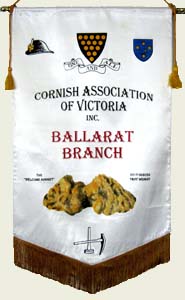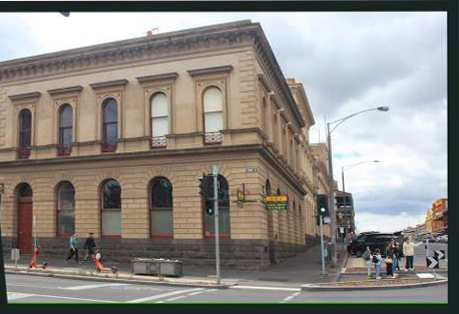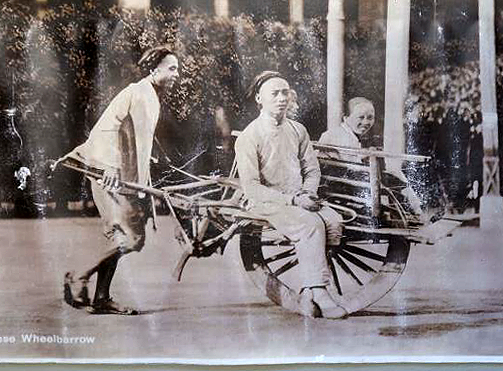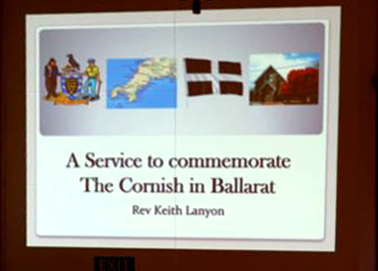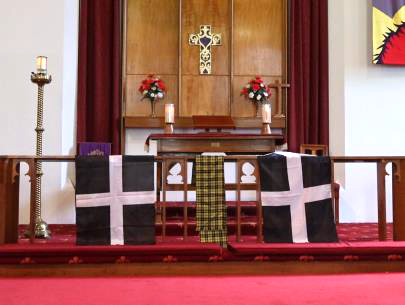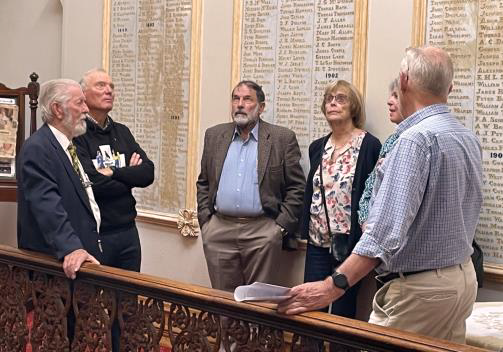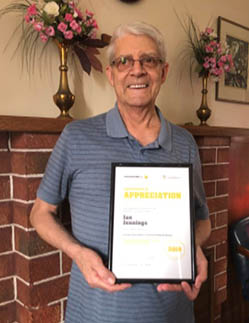 |
- Ballarat Branch - |
Upcoming ProgramRecent
Speakers
|
St Piran's Day - Sunday 2nd March Skipton Street UnitingThe Church congregation welcomed members of the Cornish Association to join with them in Worship celebrating their Cornish heritage.Lunch followed at the Flying Horse Bistro. Following lunch, the fittest of our members were given a tour of the Old Colonist Association building in Lydiard Street.
Saturday 1st February 2025 - Keith Lanyon
An interactive session began Keith Lanyon’s talk
for the afternoon’s meeting. “When I say
Cornwall or Cornish what comes to mind?”
Answers included – wonderful singing; a well kept
secret; beautiful coast line; family connection;
ancestral villages; Cornish pasties; Roskilly Ice
cream; Rodda’s cream; cream teas; smuggling;
ancestors; Duchy; isolation; Doc Martin; well
educated mining men. |
|||||||||||||||||||||||||||||||||||||||||||||||||||||||||||||||||||||||||||||||||||||||||||||||||||||||||||||||||||||||||||||||||||||||||||||||||||||||||||||||||||||||||||||||||||
 |
 |
 |
 |
Photos from Chrissy Stancliffe
Saturday 5th October 2024 - Wendy Benoit's
Quiz
1.What are the big plant geodomes in Cornwall
called?2. What colour is the Cornwall flag?
3. Which cars were designed by a Cornish man?
4. The iconic Tate gallery is in which Cornish town?
5. Cornish pixies are famous for leading you off your path. How do you break their spell?
6. The sea is said to be 4- 5c more than the rest of England in Cornwall. True or False?
7. Name three top favourite things Cornish smugglers brought into Cornwall from France?
8. Name two Cornish delicacies made from full fat Cornish milk?
9. What bun does sycamore leaves go in?
10. What are Cornish sardines also known as?
11. What’s the path that runs around the Cornwall known as?
12. How long is the Cornwall coastline?
13. Name the only city in Cornwall?
14. What’s the most western point of the county?
15. Which classic series written by Kenneth Grahame was inspired by the River Fowey?
Saturday 3rd August 2024 - The Chinese History
in Ballarat - Mr George Zhang
His talk will covered the last 170 years and
will include why the Chinese came to Ballarat,
the famous Chinese during the Gold Rush and the
changes between the past and now.
George is a representative from the Chinese
Australian Cultural Society in Ballarat.
This group is involved in the Xin Jin Shan
library located on the corner of Lydiard and
Sturt Streets and has in excess of 140 000
books.
See ABC report from January 2023 about the
library: https://www.abc.net.au/news/2023-01-10/chinese-library-ballarat-xin-jin-shan-opening/101828714
Saturday 1st June 2024 - This was the Annual General Meeting
Annual Election of Office Bearers and Committee
took place during the meeting and was conducted
by Ted Curnow, as Brain Rollason (President of
the CAV) was unable to attend due to illness.
Those elected:
Chairperson - Keith Lanyon
Vice-Chairperson - Wendy Benoit
Administrative Secretary - Wendy Benoit
Treasurer- Jim Hocking
Committee Members - Robyn Coates & Bev
Hocking.
Following the AGM, Beryl Curnow gave an
illustrated talk of the Four Seasons of
Cornwall, featuring many photos taken by Ted
whilst they were living in Cornwall for two
years. Members were most interested and
thoroughly enjoyed seeing all the photos.
Saturday 6th April 2024 - St Piran's Day Celebrations Around the World
Robyn Coates showed Slides of St Piran’s Day
Celebrations in Ballarat, Cornwall and Canada
and of St Piran’s Oratory in Cornwall.
| In Ballarat the
celebrations started with a traditional
church service in the Skipton Street
Uniting Church. This was followed with Morning Tea in the Hall and then lunch at Craigs Hotel. The next visit was to St Paul’s Anglican Church on Bakery Hill. St Paul’s dates to 1854. Then we were off to Ballarat Central Uniting Church where David Pratt greeted us and shared with us some of stories of former parishioners with a Cornish connection. Robyn then shared with us information concerning St Piran’s Oratory and this can be found at: https://www.cornishvic.org.au/latenews.html |
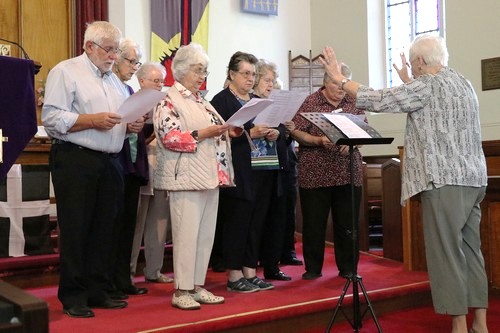 |
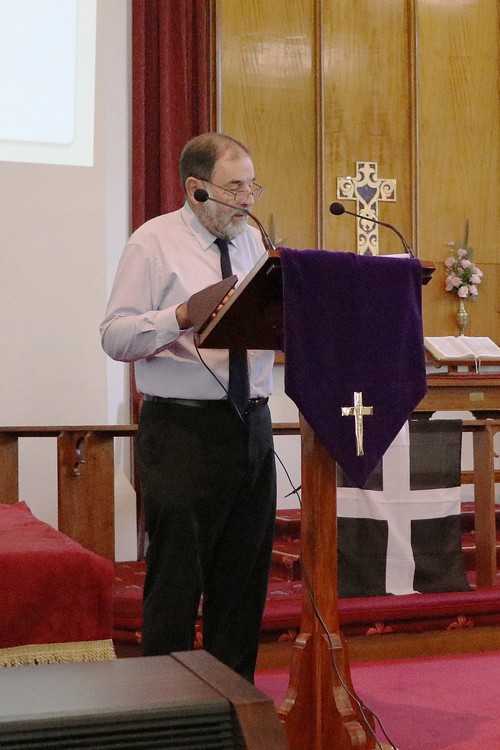 |
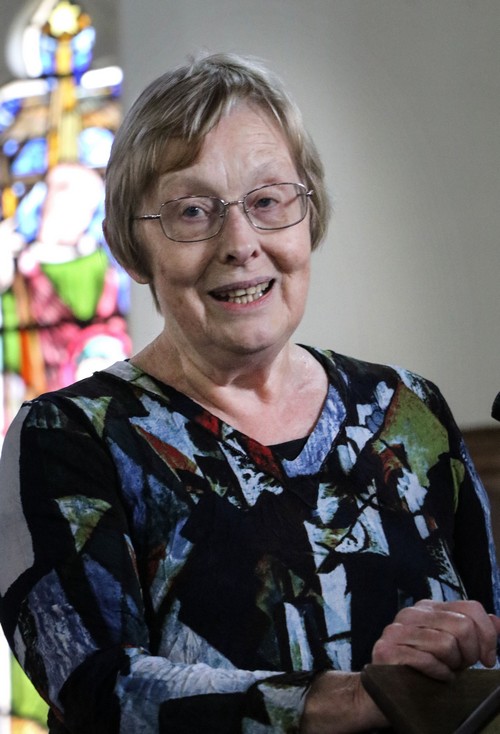 |
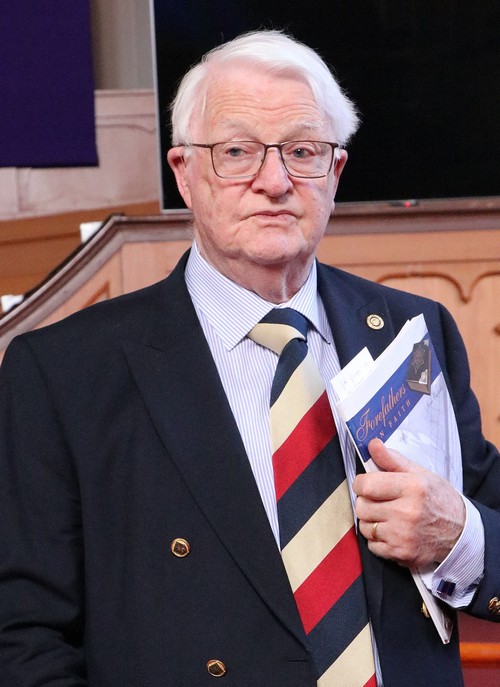 |
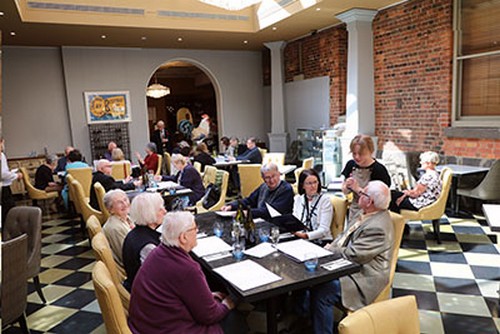 |
 |
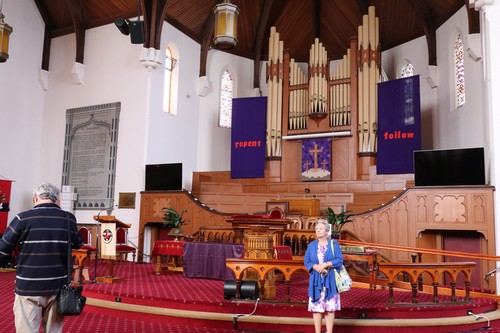 |
The photos are: The Choir; Keith Lanyon; Dr Anne Doggett; David Pratt; Dinning at Craigs Hotel; St Paul's and Central Uniting Church
Saturday 3rd February 2024 - Dr Phil Roberts OAM, a noted Ballarat historian, writer and well known educator throughout Ballarat.
Phil shared information from some of his books, including some hints in writing, and it was a most entertaining afternoon.
Phil has written 21 books - six school histories; five sporting club histories; four local industry books and six community histories. Phil, also reminded us of the wonderful Ballaarat Mechanics Institute (BMI) and its programme of Twilight Talks. Phil is a former President of BMI. These talks are hosted by Phil and Neil Leckie. Neil Leckie is a BMI Member and is one of the BMI Tour Guides. Neil is also a former Army Reservist with an interest in Ballarat’s military history. He manages the military museum at Ranger Barracks in Alfredton. (if you have an interest in Ballarat Military History then this Museum is worthy of a visit) BMI is located at 117-119 Sturt Street. Tours of the collection are held regularly in the daytime. https://ballaratmi.org.au/ |
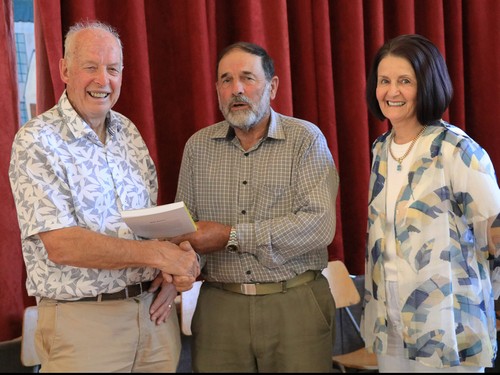 |
Saturday 3rd December - Annual Christmas Luncheon - at the Ballarat Grand
There was great fun, friendship, good food,
quizzes and singing. A great time was had
by all in attendance.
To view the photo gallery for this event, Click here
Wednesday 18th October 2023 - the launch of the CAV Library at the Castlemaine Historical Society - 7 Goldsmith Crescent, Castlemaine
To view the photo gallery for this event, Click here
Saturday 7th October 2023 - The speaker will
be Simon Dennis from Buninyong
A comprehensive article on the Dennis Family
can be found in the December issue of the
Ballarat CAV Newsletter dated December
2023. Click
here to read this Newsletter
Saturday 5th August 2023 - Jenny Burrell and the 1891 Women’s Suffrage Petition
In 1865, following a brief debate, Parliament
passed a law, restricting the vote to male
ratepayers only. In 1891, in an
extraordinary effort to gain the right to vote
for all Victorian women, a handful of dedicated
women took to the streets and railway stations
to collect signatures for a petition. The
Women’s Christian Temperance Union and the
Women’s Suffrage Society took up the challenge.
In just six weeks, almost 30,000 women and men
from more than 800 different Victorian towns and
suburbs signed the petition, affirming their
belief that 'Women should Vote on Equal Terms
with
Men'.
These
is the open remarks of Jenny's fascinating
story. It is a "must read" for all who
are unfamiliar with the story. Read a
full report in the October addition of the
Ballarat CAV Newsletter dated October
2023. Click
here to open this Newsletter
 Letter to the Speaker of the Legislative Assembly accompanying the Petition; The Petition; Joan Hunt and Jenny Burrell with the Petition; Val D'Angri, Jenny and visiting friend. |
|
Saturday 3rd June 2023 -
Annual General
Meeting - Brian Rollason, President of CAV the
speaker
For a report of the AGM click here to read
from the Ballarat August Newsletter. Brian's presentation was about Pendennis and St Mawes Castles, situated on either side of the mouth of the Fal River.
The talk included talk included lots of photos, drawings and maps.
| The castles are two of the
finest surviving coastal fortresses which
began as gun forts in the 16th century as
part of Henry VIII’s plan to protect
England. The castles were built from 1539-1545 when England faced a possible invasion from the united powers of Catholic Europe and were part of the national plan by Henry devised to strengthen military and naval forces. In 1533, Henry VIII had broken with Pope Paul III in order to annul the long-standing marriage to his wife, Catherine of Aragon and marry Anne Boleyn. Catherine was the aunt of Charles V, the Holy Roman Emperor, and he took the annulment as a personal insult. This resulted in France and the Roman Empire declaring an alliance against Henry in 1538, and the Pope encouraging the two to attack England. |
A Map of Falmouth |
click here to read from the Ballarat August Newsletter
Saturday 1st April 2023 - Maureen Waddington,
director of Mission from St John of God
Hospital.
There are seventeen St John of God Hospitals –
sixteen in Australia – seven in Victoria, seven in
Western Australia and two in New South Wales - and
one in New Zealand.The Congregation of the Sisters of St John of God was founded in Wexford, Ireland, in 1871
Inspired by the work of their patron saint, St John of God, they nursed those in poverty. Saint John of God devoted his life to alleviating human suffering, and comforted the afflicted, sick and dying.
He was particularly passionate about combating the injustices experienced by people disadvantaged through illness or destitution.
| The Sisters of St John of
God first came to Ballarat in 1915 in
response to a call from Bishop Higgins to
help care for people in the community who
were suffering from infectious diseases
such as diphtheria and typhoid. They were based in Bailley’s Mansion and it was a 25 bed hospital. Initially, they were not embraced by the community but after twelve months when people realised that they were offering a service to all, not just those of the Catholic faith, things improved. They were based in Bailley’s Mansion and it was a 25 bed hospital. Initially, they were not embraced by the community but after twelve months when people realised that they were offering a service to all, not just those of the Catholic faith, things improved. |
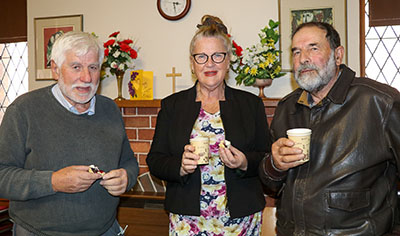 Les, Maureen and Keith |
Sunday 5th March 2023 - St Piran's Day
It was wonderful that Ballarat Members were joined
by friends, from Melbourne, Geelong and even a
couple from New Zealand, to celebrate St Piran’s
Day in 2023.Following the Church Service, members began an interesting and informative tour put together by Bev and Jim Hocking, tour guides extraordinaire, ably assisted by Simon Dennis, from Buninyong, who lived and breathed Buninyong History.
| The Chairperson of the
Ballarat Branch of the Cornish
Association, Rev. Keith Lanyon, led a
‘Church Service to Commemorate the Cornish
in Ballarat’, at Skipton Street Uniting
Church, with members Les George, Wendy
Benoit, Lorice Jenkin and Robyn Coates
taking part in the service. Following the Church Service, members began an interesting and informative tour put together by Bev and Jim Hocking, tour guides extraordinaire, ably assisted by Simon Dennis, from Buninyong, who lived and breathed Buninyong History. The first stop was The Crown Hotel was our lunch. Then visits to Buninyong Town Hall and Court House; Camellia Cottage; Havilah Cottage; Dr Longden’s House; The Post Office; Hiscock Memorial; and The Buninyong Cemetery. For the complete story along with photos see the June Newsletter. Click here |
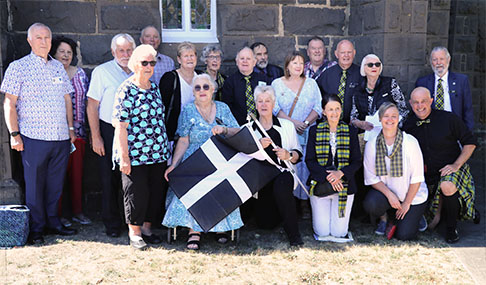 CAV members at kipton Street Uniting Church |
Saturday 4th February 2023 - Shared Family History Snippets
Keith Lanyon shared stories of his family and their farm.Robyn Coates showed an autograph book belonging to a great aunt and given to the aunt on her 21st birthday in 1901.
Arthur Coates told some of the story of his aunt, Maud Coates, who had trained as Primary School Teacher and was appointed to Glenlogie in 1927
Wendy Benoit shared a cutting, WHAT MINERS SUFFER (from The Bendigo Independent 12 August 1908: page 2) concerning the death of John Barnett. John was one of the sons born to Charles Barnett and his wife Ellen Moxley, who married in 1854.
Jenny Burrell shared information about the Lukeis family she had come across whilst researching.
Eli Lukeis was the eldest son of Samuel Lukeis and Mary Freeman Caddy (daughter of Michael Caddy/Mary Freeman)
Val D’Angri told us of The Prophecies of Mother
Shipton who was born in 1488.
She was an unknown to those present at the meeting
and we had a chuckle at some of the prophecies.
To read the stories in full, see the Ballarat Newsletter, April 2023. All the recent newsletters can be found by following this link.
Saturday 3rd December 2022 - Christmas
Luncheon
Ballarat members, joined by Ken and Lyn Peak
and Neil and Marilyn Thomas, were delighted to
meet together for the Annual Christmas lunch,
held in December, at the restaurant in the
historic Ballaarat Club building dating from
1889.
The beautifully decorated room was a wonderful
setting for our gathering and the traditional
Christmas meal was greatly appreciated.
During the meeting two original members of the
Association – John Mildren and John Stuchbery -
were presented with an Honorary Life Membership
by Ken Peak, past President of the CAV.
Both had recently celebrated their 90th
birthdays.
Interestingly, both Johns had begun their
working lives as school teachers and had taught
at Teachers’ Colleges.
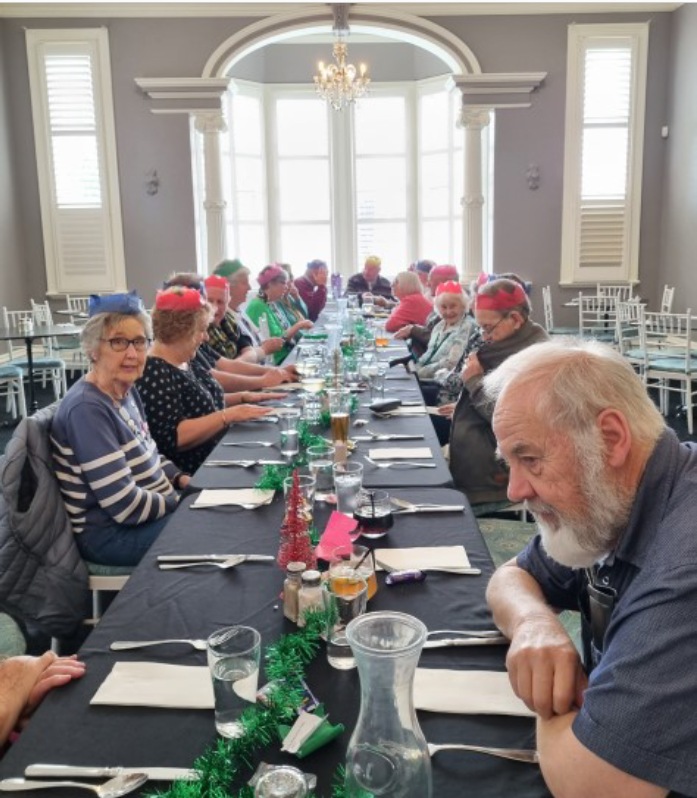 Diners |
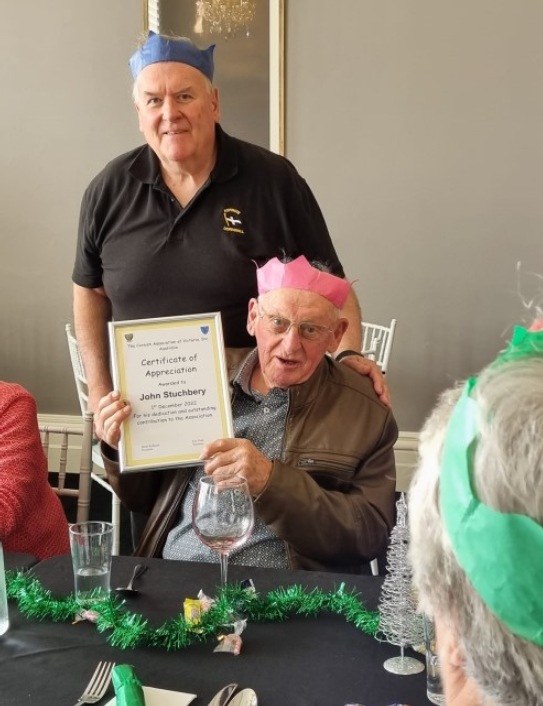 John Stuchbery with Ken |
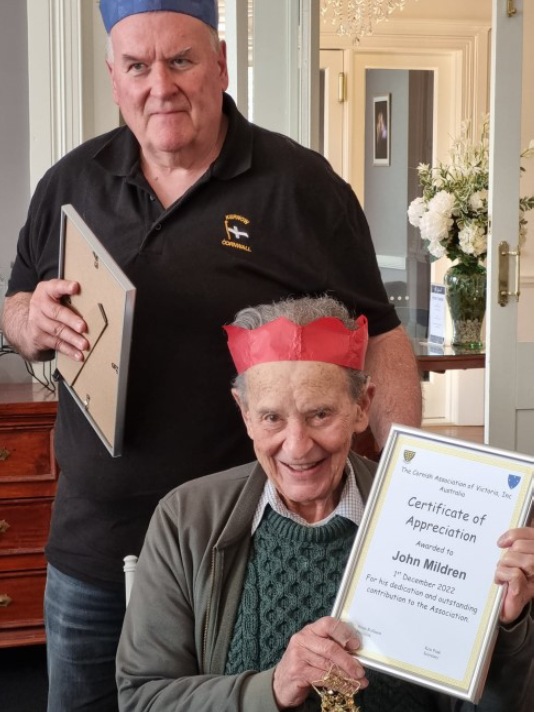 John Mildren with Ken |
Saturday 1st October 2022 - Doug Bradby
Doug Bradby gave a fascinating talk about the
Ballarat Goldfields, from the beginning of the
gold discoveries by shepherds to the
establishment of large mines employing many of
the Ballarat men.
He included the involvement of the Cornish
Miners, their successes and their involvement in
the development of Ballarat.
Doug has written seven history books for
children and three books that explore Ballarat’s
mining history.
Following his entertaining talk, members were
keen to purchase copies of his books.
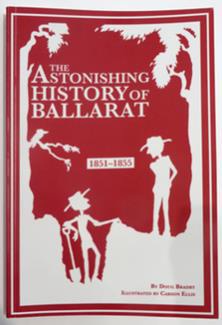 |
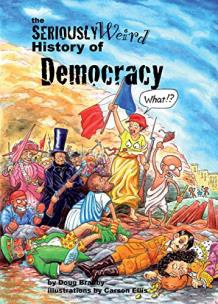 |
Saturday 6th August 2022: Jenny Burrell
Ballarat and District Resources for Family
History Research
Saturday 2nd April 2022: Ted Curnow, "The Rediscovery of Celtic Spirituality In Cornwall?"
A full report of Ted's Presentation can be read
in the June 2022 copy of the CAV Ballarat Branch
Newsletter by clicking
this link
Saturday 6th February 2022 Members showed interesting ‘family treasures’
Les George – showed a sampler which had been
embroidered by his great grandmother
Robyn Coates – also showed an embroidery sampler
which had been completed by Elizabeth Jane Hicks
David Pratt - Diary of William Carvosso
David’s mother’s maiden name was Carvosso and
her ancestor William Carvosso was born in
Mousehole.
Ted showed a lamp in the form of an Engine House
Jenny bought a blue and white porcelain cat as a
gift for her daughter Jane.
Beryl Curnow brought cuff links and a pin and
also a brooch - all from the Blue Hills Tin Mine
Lenice Stuchbery brought a ring that was given
to Lenice’s father on his 21st Birthday
Arthur showed a leather family photo album which
had been given to his grandparents as a wedding
gift on 4th January 1893
Bev Pratt shared with members a tribute to her
brother, Clive Luckman, who had died recently
written by Stephen Hawke, the current President
of the Genealogical Society of Victoria.
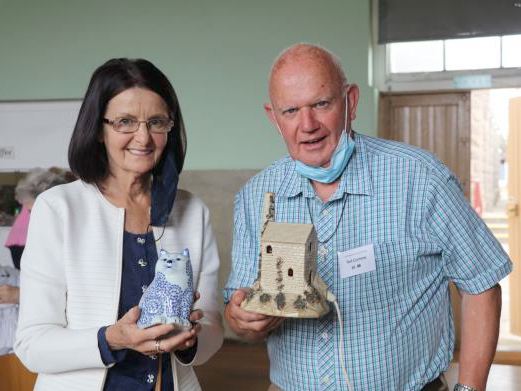 |
 |
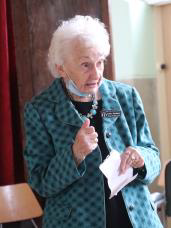 |
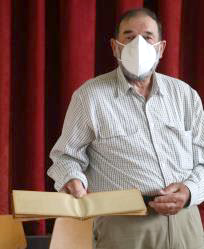 |
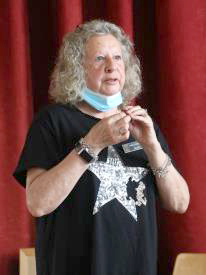 |
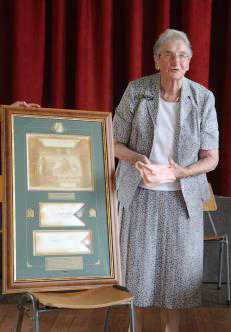 |
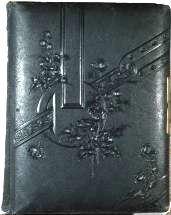 |
 |
Keith Lanyon showed an old photographic
negative on glass originally thought to be of
Keith’s great, great grandfather produced by the
Collodion Process
Val D'Angri showed memorabilia of the opening of
Parliament in May 1901 along side some souvenirs
of celebrations for the 100th year of Australian
Parliament as well as a small china doll with
hand crocheted clothing.
Chrissy Stancliffe brought a ring that seems to
have belonged to her great, great grandmother,
whose name was Alice Ada Pearce - she was born
on 28th March 1868 at Napoleon Lead
Wendy Benoit showed a tooled leather photo album
of family photos including an original photo of
her maternal great, great grandfather William
Hicks who had been the Mine Manager of the Star
of the East Mine in Sebastopol
Saturday 4th October 2021: Val D'Angri: The Restoration of the Stawell Miners' Banner
Val worked on the restoration of this banner and here tells us all how it was done.
Saturday 7th August 2021: Austell Lanyon: Gold Mining in Victoria
Austell gave a fascinating
presentation to the Ballarat Branch.
Saturday 3rd April 2021 - Keith Lanyon - History of Pirates
Today the term pirate has a certain
???romance??? about it and pirates are often
portrayed as dashing and charming rather than as
the villains they were.
|
All piracy is related to theft typically with the aim of stealing valuable goods ??? people for slavery or hostage/ransom, cargo, valuable metals and jewels and even vessels. Keith talked about all the
historic dangerous area for piracy.
|
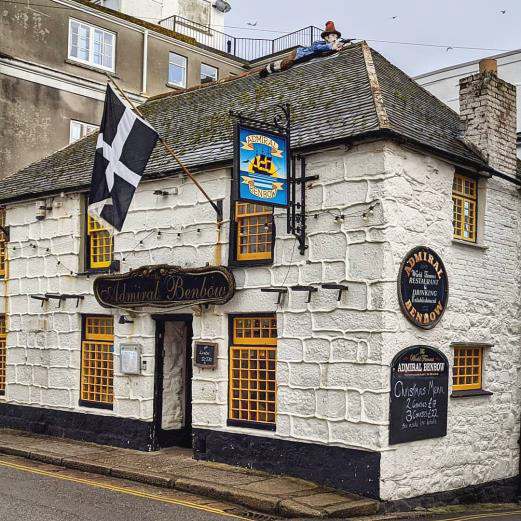 The Admiral Benbow |
Penzance has a hotel, the Admiral Benbow, and
atop this hotel is a carving of Octavius Lanyon,
supposedly firing at the revenue men who were
after his crew for illegal imports.
He ended with a prayer supposedly
written by a minister on the Isles of Scilly,
"We pray Thee, O Lord, not that wrecks should
happen, but that if any wrecks should happen,
Thou wilt guide them to the Scilly Isles for the
benefit of the poor inhabitants."
Read a full report of his presentation in the
April 2021 CAV
Ballarat Newsletter
Saturday 6th February 2021: Robyn Coates Presented "Thomas Curnow ??? The Hero of Glenrowan"
Thomas Curnow was born in Cornwall on 4th June 1855 but was in Ballarat from 1857. Thomas studied to be teacher in the 1870s and in July 1876 he was appointed Head Teacher at State School 1742 in the township of Glenrowan, Into this peaceful life came the infamous Kelly gang. Kelly and his gang had ambushed many of the Glenrowan locals and held them hostage at the local hotel, but Thomas Curnow managed to convince Ned Kelly to let him to take his wife, child and sister home.His decision to alert the engine driver using a candle and red scarf saved many lives by stopping the train from being derailed. When the attempt to derail and ambush the police train failed Kelly and his gang engaged in a final violent confrontation with the Victoria Police at Glenrowan on 28th June 1880 resulting in a few deaths. Ned Kelly and his gang were subsequently arrested. Thomas Curnow would not have been a popular man and he would have been concerned for his and his family???s safety so he requested an immediate teaching transfer back to his home town of Ballarat. Thomas Curnow taught at two Ballarat schools ??? Dana Street and Urquhart Street ??? until his retirement on 30th June 1915. He had taught for 38 years and he retired with a pension of ??145.13.4 per annum. His retirement was newsworthy and is reported in many newspapers across Australia. |
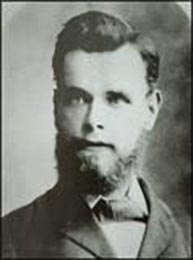 Thomas Curnow
|
Christmas 2020 Gathering
On Saturday 5th December, after much toing and
froing due to COVID-19 restrictions and the
lockdown, 22 Members gathered at Barkly???s
Restaurant, corner Main Road and Barkly Street,
the first time most had met since March.
| After a warm welcome from
our Chairperson, Keith Lanyon, we enjoyed
a delicious two course Christmas meal amid
much chatter and sharing of bon-bon jokes.
Tea and Coffee with Christmas Cake ended
the meal. Robyn Coates made a small presentation to each of our Office bearers and then led everyone in a short Cornish Quiz, as a prequel to the CAV Christmas quiz to happen the following week (included on p 5) It was so wonderful to see everyone in person and hopefully it won???t be too much longer before we are again meeting at Skipton Street. |
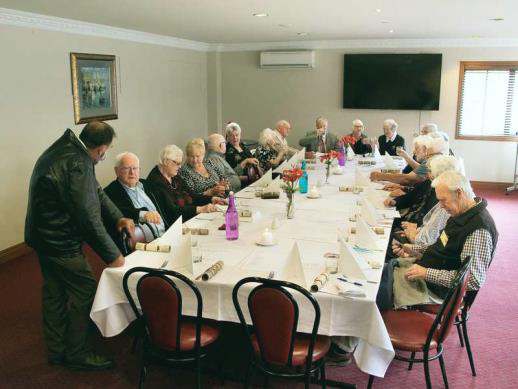 A Selection of the
Diners
|
Saturday 3rd October: Ballarat Identities Presented Via Zoom by Wendy Benoit and Di Christensen
At the October Meeting, held via Zoom, two of
our members, Wendy Benoit and Di Christensen,
gave very interesting talks about Ballarat
identities ??? both with connections to their
families and both who had served as Mayor in
local government in Sebastopol and Ballarat
East. William Hicks in Sebastopol
and Isaiah Pearce in Ballarat East.
William Hicks was born in 1831 in Penstraze,
Cornwall, the son of Thomas Hicks and Ann
Roberts ??? he was the second child of six ???
Jane, William, Thomas, John, Mary Ann and James.
By the age of ten he was working as a dresser in
a copper mine and by the age of 20 he was a
copper miner.
He travelled to South Australia aboard the
sailing ship Sultana with his wife Jane
Wallace/Wallis whom he had married, after Banns
at St Cleer in April 1851. She was the daughter
of John Wallis and Mary Stephens.
After a time in Burra and the birth of two
children in South Australia, they travelled to
Victoria where another eleven children were
born.
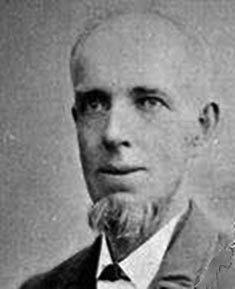 William Hicks |
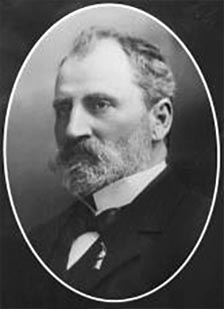 Isaiah Pearce |
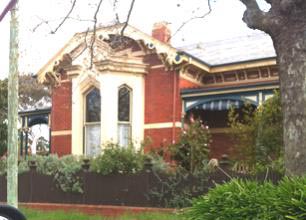 "Clowance??? - Pearce Home in Mt Pleasant |
After brief stays working as a miner at Forest
Creek and Bendigo they lived in Ballarat and
Linton before settling back in Sebastopol.
William held positions with various Mines,
before acting as Mine Manager with the Guiding
Star mine and then the Star of the East Mine,
which produced more than 250 000 ounces of gold.
William Hicks served for ten years as a
Councillor on the Sebastopol Council and was
Mayor during 1885-1886.
William Hicks was very community minded and he
was a member of the Old Colonist Association,
Ballarat Hospital Board, the Benevolent and
Orphan Asylum and the Masonic Lodge.
He attended the Rubicon Street Wesleyan Church
and was Sunday School Superintendent for many
years.
He died in December 1898 and is buried in the
Ballarat Old Cemetery.
A memorial service was held at the Rubicon
Street Wesleyan Church to celebrate his life the
Sunday after his burial.
His wife Jane died in 1922.
William was Wendy???s maternal great, great
grandfather.
Isaiah Pearce was the son of John Pearce and
Eleanor Pool, of Crowan, Cornwall and emigrated
to Australia.
He was the youngest of six surviving children
??? John, James, Emmanuel, Solomon, Ellen Pool
and Isaiah.
Isaiah in partnership with his brother James,
and a brother in law, William Thomas, ran
Pearce???s Battery in Golden Point in 1861.
It was still in operation in the 1920s.
Isaiah was a member of the Council of the
Borough of Ballarat East for many years and was
Mayor four times; he was very involved in
Council business always speaking up for the
residents of the municipality.
He was a member of many community organizations
in the city - Ballarat Water Commission,
Ballarat Benevolent Asylum, The Ballarat
Orphanage, Ballarat East Library and President
or Chairman of most of them. Ballarat Cricket
Club and President of the Mt Pleasant Mechanics
Institute. He was also a member of St John???s
Masonic Lodge.
He was appointed a JP in 1892.
Isaiah built a home on the corner of Barkly and
Cameron Streets in Ballarat East, named
"Clowance???
See December 2020 CAV Ballarat Newsletter
March 5th to 8th: Ballarat St Piran's Cornish Festival
As the day dawned on St
Piran???s Day, Thursday 5th March, Ballarat was
foggy with a misty rain - reminiscent of the
Cornish mizzle that many had experienced whilst
visiting Cornwall.
Not to be deterred 50 or so people gathered in
Victoria Square to raise the flag of St Piran.
After a welcome from Wendy Benoit, Cr Mark
Harris extended a welcome on behalf of the Mayor
of the City of Ballarat and acknowledged the
Wadawurrung People
The President of the Cornish Association of
Victoria, Ken Peak, responded
Following the Flag Raising, people adjourned to
the Skipton Street Uniting Church Hall for a
delicious Pasty and Salad Lunch, with Pasties
supplied by Kieran King from the Aussie Oggie
Pasty Company in Ballarat and salads prepared by
Bev Hocking.
During the afternoon, Ken Peak, CAV President,
gave us an interesting insight into the
genealogy of his family.
Thirty-one participants assembled at Skipton
Street Hall, on the morning of Friday 6th March,
for a tour of Creswick. Our guide for the
morning, Val Lawrence.
A short tour of Creswick and visits to the
Anglican church (home to the Barkly Street UC
Organ) and the Masonic Temple, a first for most
people, and a drive past the Australasia Mine
no. 2 disaster site, where 22 miners died in
1892, preceded our visit to the immaculately
kept Creswick Cemetery.
People enjoyed morning tea in the Rotunda.
Returning to Creswick several people stopped off
at the Creswick Woollen Mills and others
returned to have lunch in Creswick. The
Creswick Museum was of interest to most and some
people enjoyed sitting in the sun chatting and
relaxing.
 Flag Raising Flag Raising |
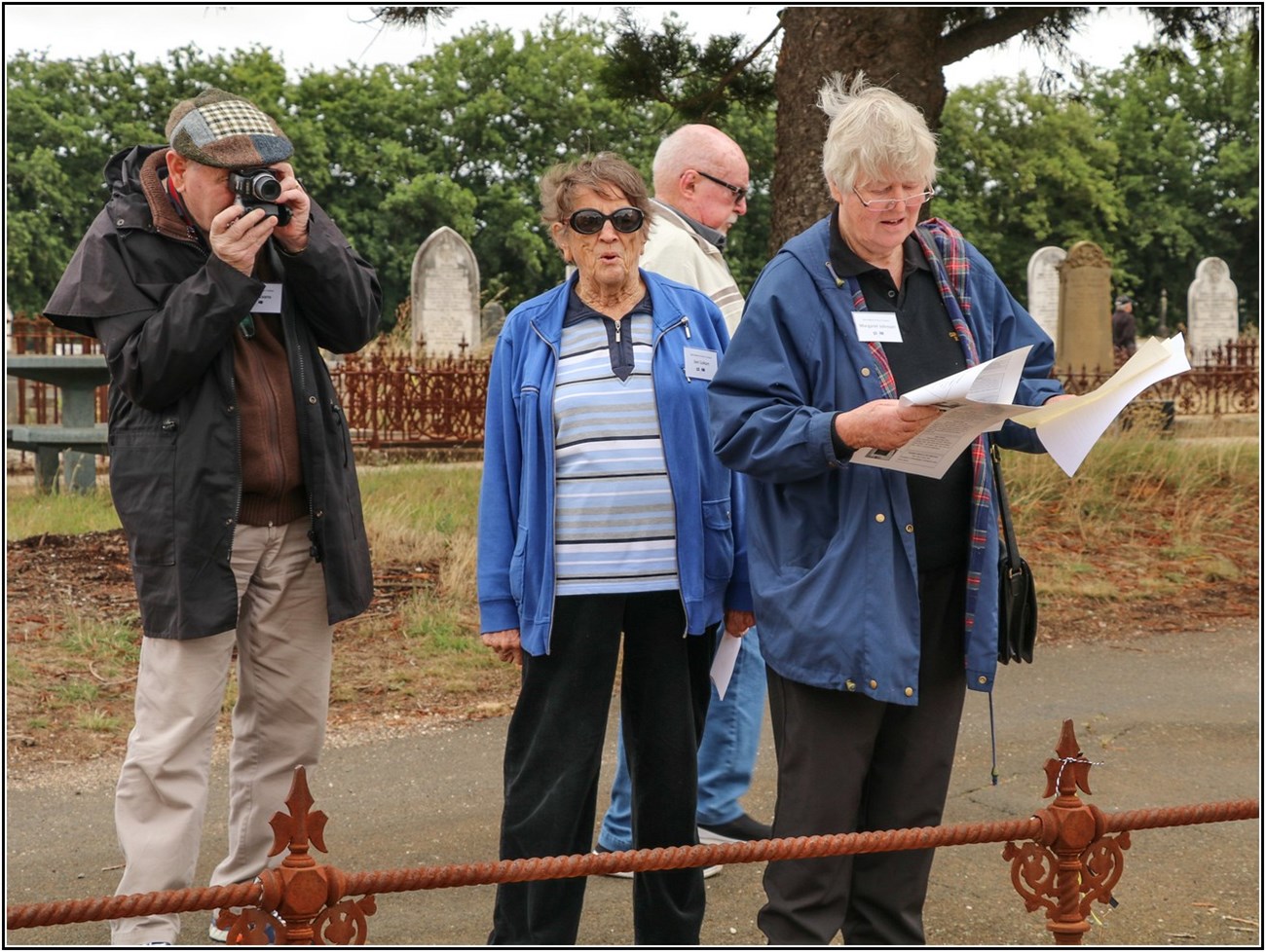 The Bus Trip The Bus Trip |
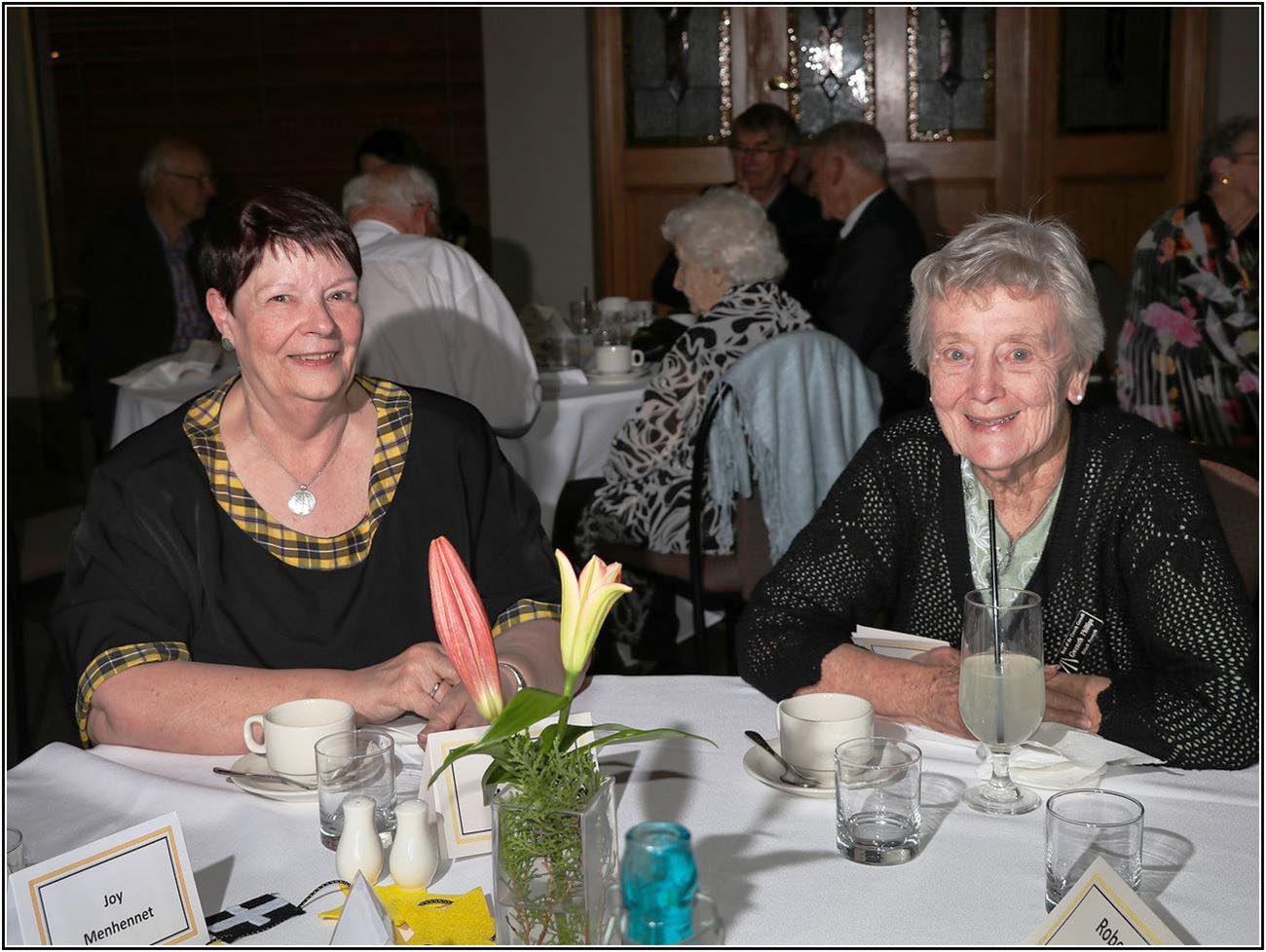 The Dinner The Dinner |
The South Gardens, opposite Lake Wendouree, was the venue for the 34th Australian Assembly of Bards of the Gorsedh Kernow, on Saturday 7th March. Twenty-one Bards participated and had travelled from NSW, South Australia, Bendigo, Geelong and Melbourne to join those from Ballarat.
Following the Ceremony Bards and their families and friends adjourned to the Skipton Street UC Hall for afternoon tea.
In the evening fifty-two people gathered for dinner, at Barklys restaurant, where a celebratory cake was cut by Lenice Stuchbery.
Our after dinner speaker, Dr Phil Roberts, shared information concerning Ballarat???s Avenue of Honour and Arch of Victory.
Phil was the recipient of the Premier???s History Award in 2019 for his book, Avenue of Memories.
Avenue of Memories was produced to mark the centenary of Ballarat???s Arch of Victory and Avenue of Honour, which runs for 22 kilometres and is considered the longest avenue of its kind in Australia. Close to 4,000 trees were planted on the avenue to pay tribute to the men and women from the district who served in World War One, 528 of whom died.
Some lusty singing of Methodist hymn favourites preceded and were included in the Heritage Church Service at Skipton Street Uniting Church on Sunday morning. Rev. Ted Curnow and his wife Beryl led the Service
After a light lunch provided by the Skipton Street UC women, Max Duthie gave us a short talk about the history of the Mt Pleasant area of Ballarat, before twenty-one people travelled in convoy to a selection of sites where Max gave us information about each of the sites. See the Photo Galleries
Saturday 7th December 2019 - Annual Christmas Dinner
A very enjoyable luncheon was held at The
Barkly corner of Main Road and Barkly street on
Saturday 7th December. Keith Lanyon, our
Chairperson extended a warm welcome to everyone
with best wishes for the Christmas season.
Visitors from Melbourne and Geelong joined us
for a most pleasant afternoon with lots of
chatter and renewing of friendships. Jenny
Burrell presented a posy of flowers to Robyn
Coates in appreciation for her work on the
Newsletter.
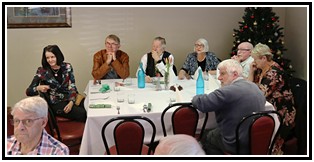 |
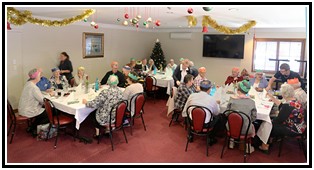 |
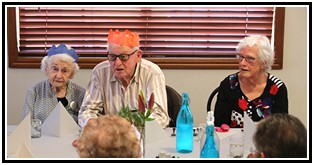 |
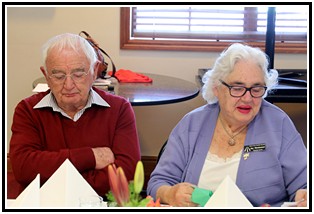 |
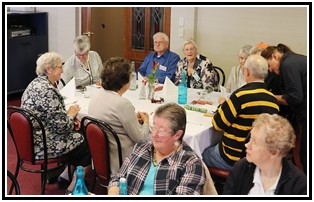 |
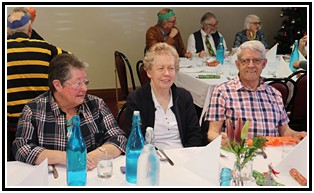 |
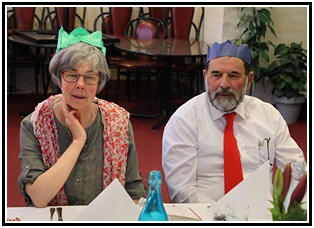 |
Saturday 5th October - we welcomed Sandra and Alan Ballard as our speakers
Alan and Sandra are members at Skipton Street Uniting Church where Alan plays the keyboard.Alan was a former lecturer at SMB and Federation University whilst Sandra taught at Clarendon College.
Sandra???s Burt family came from Marazion and arrived in Australia in the 1870s and worked for a time at Broken Hill in the mines.
Charles Burt and his wife Elizabeth had six sons and three daughters.
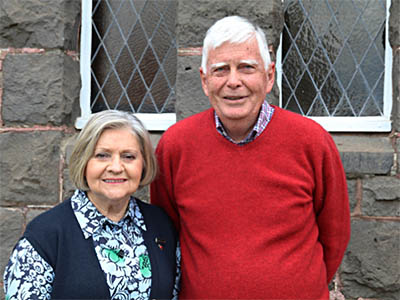 Alan and Sandra |
One of their daughters,
Ellen known as Nellie married Joseph
Matthews whose family had also come from
Cornwall. Nellie was a good correspondent and maintained a connection with both her Burt family and her husband???s Matthews family and extended Edmunds family in Cornwall. Sandra???s mother continued the tradition. Sandra stayed in Cornwall with the family in 1967 and Alan and Sandra visited them more recently. Alan showed us some wonderful photos of Cornwall, including: The viaduct at Calstock, The village and fishing port of Mevagissey, Porthleven St Ives, Padstow, Port Isaac, St Kew, St Michael???s Mount |
Jenny Burrell also shared a 1610 map of Cornwall which was of interest.
It was a very enjoyable afternoon and Keith thanked Sandra and Alan with a small gift.
Saturday 3rd August - Brian Shanahan - the
Celtic Nations
He was inspired when travelling around France
to form the Celtic group and thinks it would be
a good idea for the Celtic groups of Ballarat to
be brought together to organize some activities.
He was most disappointed that during the recent
Heritage Weekend there was no mention of the
Cornish Mining or St John of God hospital.
From its beginning in 1887, the Celtic Club???s
reason for existing was to unite, regardless of
creed or Australian party politics, men who
sympathized with Ireland's aspirations for Home
Rule.
In those early days the Celtic Club not only
sponsored various social events but also some
political events; many related to Irish issues.
It was a time when many Australians were looking
to being independent of England.
In Melbourne, in the late 1880's, many people
without Irish ancestry supported Ireland's
aspiration for self-government.
There are seven recognized Celtic Nations as
represented on the Celtic Nation Flag -
Cornwall, Wales, Ireland, Scotland, Brittany,
Isle of Man and Galicia (northern Spain).
Parts of the northern Iberian Peninsula, namely
Cantabria, Asturias and Northern Portugal, also
lay claim to this heritage
The Nations represented on the Flag are:
Galicia (top left - white with blue stripe)
Ireland (top middle - green, white and orange)
Scotland (top right corner - blue and white
cross)
Cornwall (middle right - black with white cross)
Isle of Man (bottom -red with three legs)
Wales - (bottom - red dragon and green and
white)
Brittany - left middle - black and white)
 |
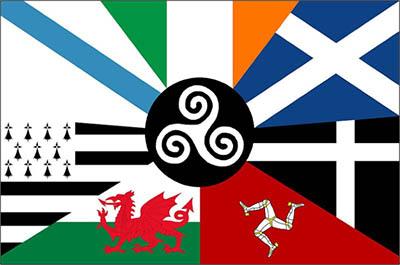 |
Saturday 1st June - Annual Meeting - CAV President Neil Thomas spoke.
With the absence of our Chairperson, Keith, due
to illness, Jim Hocking took the chair for the
AGM.
Reports were delivered from the Treasurer, Ian,
and Librarian, Wendy (in absentia - read by
Lorice Jenkin).
Neil Thomas, the President of the CAV, conducted
the election of Office Bearers and the following
people were appointed to the various positions
for 2019-2020.
Chairperson Keith Lanyon, Administrative
Secretary Lorice Jenkin, Treasurer Ian Jennings,
Committee Members
Wendy Benoit, Di Christensen. Robyn Coates, Bev
Hocking, Jim Hocking, Joy Menhennet, John
Mildren, Lenice Stuchbery.
Following the AGM, Neil Thomas presented a
slide display on his trip to Cornwall during
2018.
Neil was able to attend three festivals:-
The Padstow Obby-Oss, Trevithick Day at Camborne
and the Helston Flora Day and he showed slides
of these well attended events.
His adventures at Trevithick Day included
visiting the ???Cornish Embassy???, a
double-decker bus in Cornish Colours, where he
sat a test to become a ???Cornish Citizen???.
Fortunately he passed.
We saw slides of the Old Bodmin Gaol which is
now being developed by a Russian entrepreneur
who plans to make the prison a convention
centre, a restaurant and also up market
accommodation.
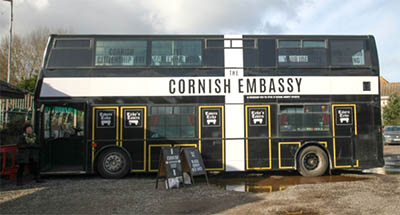 |
 |
 |
Lanhydrock (left) and Trerice (right), National
Trust properties were visited, both having
wonderful gardens. Lanhydrock is an opulent
Victorian mansion once owned by the Robartes
family, while Trerice is from the Elizabethan
era and was once the seat of the Arundell
family.
Neil showed slides of a church which his Michell
ancestors had attended - St Euny, at Redruth.
13th-19th May - Kernewek Lowender
Robyn and Arthur Coates, Wendy Benoit (and
David Smith), Glen Bray (and Keith Stodden) were
part of the Victorian contingent who attended
Kernewek Lowender.
These photos were included in the Yorke
Peninsula Country Times - the local newspaper.
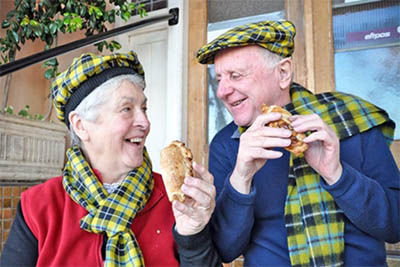 |
 |
To visit the Photo Galleries for the 2019
Kernewek Lowender Click
Here
Saturday 6th April - Tour of The Old Ballarat Cemetery
Along with many visitors, who had seen the
event advertised in the local papers (including
one man from China), our members wandered around
the Ballarat Old Cemetery for its April meeting,
when members related the lives of ancestors
buried in the Cemetery.
Lenice Stuchbery, Di Christensen, Val D???Angri,
Keith Lanyon and Robyn Coates gave informative
talks.
As people walked from grave to grave, the graves
of prominent Ballarat identities were also noted
prompting great discussion.
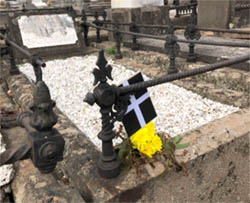 |
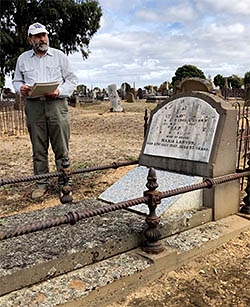 |
Much work had
gone into the presentations but here We
only get a glimpse of some of the photo
taken. It was a beautiful sunny day and there was much chatter after as everyone enjoyed a cuppa in the Rotunda. Thanks to the five speakers and to Wendy Benoit and Jim and Bev Hocking for their part in the day???s success. |
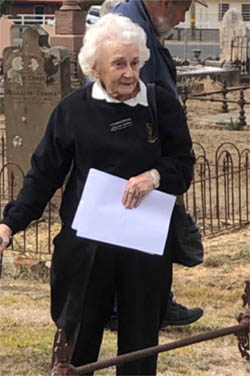 |
 |
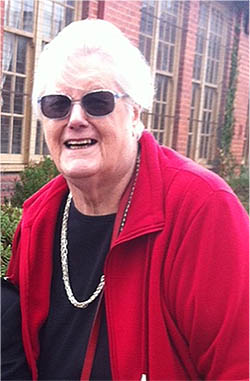 |
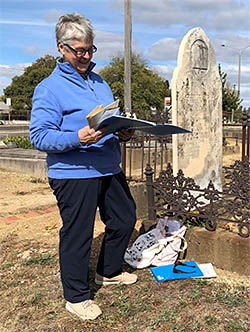 |
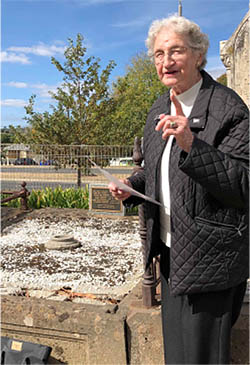 |
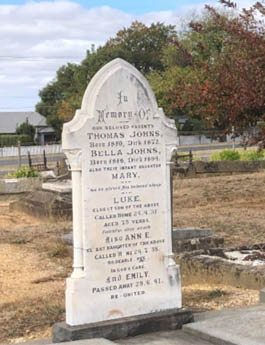 |
Saturday 2nd March - St Piran's Day Coach Trip
to the Rupanyup Museum
Twenty-one members and friends travelled by
coach to Rupanyup for this year???s celebration
of St Piran???s Day.
After a brief stop to inspect the artwork on the
Rupanyup Silo, alongside the dilapidated railway
station, we visited Woods Farming and Heritage
Museum where we were served a very tasty lunch
of sandwiches, cakes and slices (including
beautiful jelly cakes) and fresh fruit.
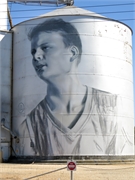 |
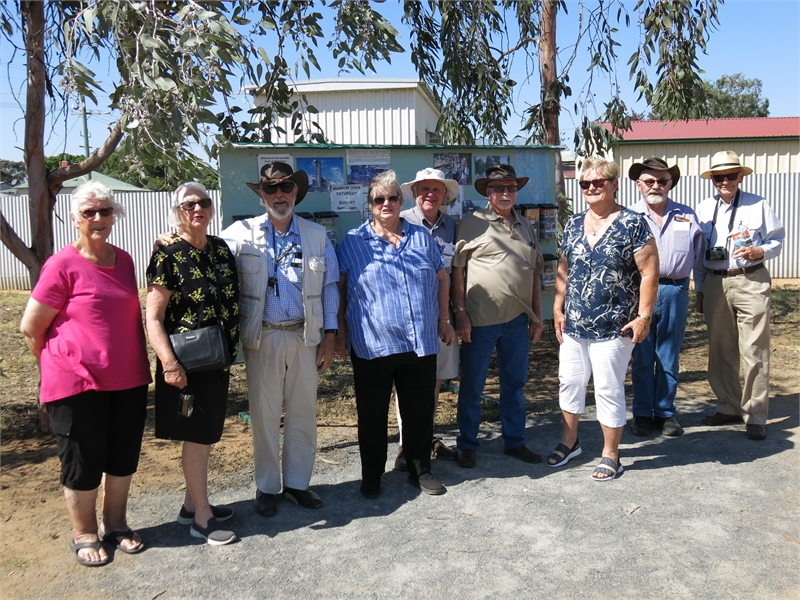 |
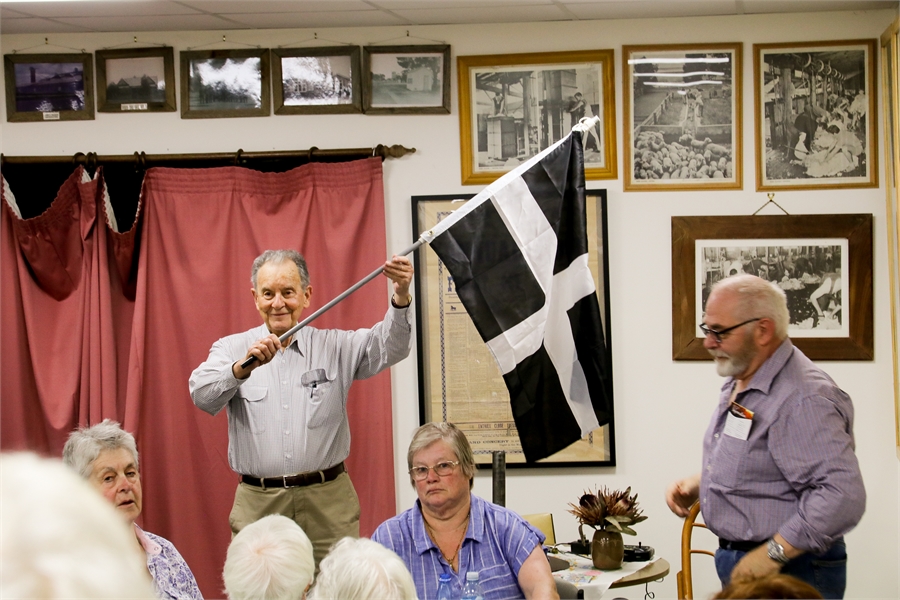 |
Following lunch, Keith Lanyon led a small
session on St Piran and John Mildren raised the
St Piran???s flag.
People were then given time to investigate the
wonderful collection established by Michael Wood
and his late brother John, (brothers of Alison
Stephen), both of whom had farmed in the area
for many years, as had their parents.
Memories of times past were certainly re-kindled
as people wandered through the various rooms and
sheds.
Rupanyup???s silo art is the work of Russian
Mural Artist, Julia Volchkova who was born in
Siberia where she studied classical painting
before moving to St Petersburg.
The featured faces are of two sports people from
the district - Jordan Weideman and Ebony Baker.
To view the Slide Show of this event follow
this link.
Saturday 2nd February 2019 - Bev and
Jim Hocking
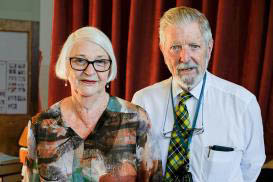 Bev and Jim
|
Bev and Jim Hocking gave a
fascinating talk on the life of John James
Clark, draftsman and architect of many
well known buildings in Victoria and
interstate. Probably the most famous in Melbourne are the former Treasury building at the Spring Street end of Collins Street and the City Baths in Swanston Street. The Geelong Customs House was also designed by J J Clark and built by William Crocker Cornish. |
Saturday 1st December 2018 - Christmas Function
| Thirty plus people enjoyed
our time at The Barkly Restaurant, on the
corner of Main Road and Barkly Street, for
our final meeting of the year with
visitors from Geelong and Melbourne
joining us. The room had been beautifully decorated by the staff and looked very festive and attractive with its white tablecloths and Christmas Decorations. Lots of chatter took place amongst the members at each table and from group to group. After our meal, a 30th Anniversary cake was cut by Lenice Stuchbery. Lenice was the oldest original group member present. Thanks go to Bev Hocking who provided the cake and decorated it beautifully. 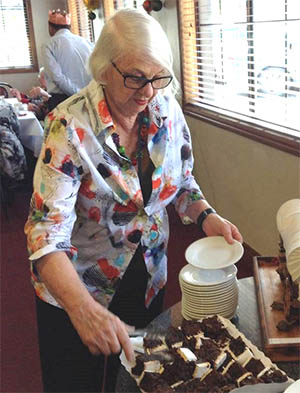
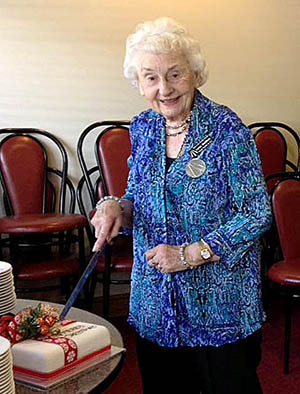 |
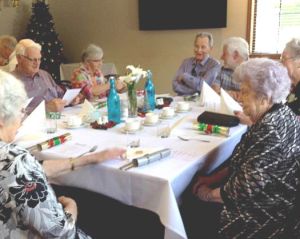
|
Saturday 6th October 2018 - Jenny Burrell -
Panoramas of Ballaarat
| In 1998, Jenny and her
cousin Max Harris published this wonderful
book of photographs and information. The book was a re-telling of the history of Ballarat in pictures and words. Jenny believes that a sense of place is vital to our identity. It is also very important to tell Ballarat stories to Ballarat children. It adds greatly to their self esteem. Panoramas of Ballaarat is a coffee-table book of 345 images of Ballarat from 1853 to 1998. Special features are the two bi-folds of Ballarat Flat (1867) and Lake Wendouree (1905). 75 early panoramas and 73 more recent ones, together with 197 smaller photographs, have been carefully selected for reproduction. The text is comprised of extracts from the writings of Ballarat's eminent historians and newspaper journalists. These have been revived as source material chiefly from little-known publications which are out of print and booklets which were unpublished or had limited distribution, such as several conservation studies. This material was loaned by individuals or found in the Ballarat Historical Society's collection. Contemporary writings include about 25 edited contributions and 13 pieces written from material supplied by individuals and organisations, as well as about 20 pieces of original writing based on research and interviews. |
 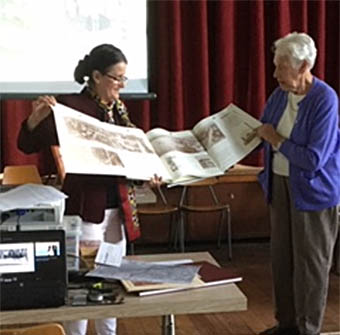 |
Saturday 4th August 2018 - Alison Stephen
 |
Alison trained as a
Mothercraft Nurse and had various
appointments looking after young children. Alison married her husband Brian in 1985. For 45 years she has been involved in Family Research - both her own, her husband Brian???s, assisting many others at the CAV and now helping some in Rupanyup where she is living. In 1988, Alison attended the St Piran???s Day Celebrations held in Ballarat and in 1993 she and (the late) Margaret Owen formed the St Just in Penwith group of the Cornish Association of Victoria, which was launched at a Celtic Festival at Monash University in 1994. Alison regularly wrote articles for the CAV Newsletter concerning St Just. |
She was the Editor of the Hocking Family
News for 28 years. There are 36 000
members on its database from all around the
world. Alison was made a Bard of the
Gorsedh Kernow in 1998 and her Bardic Name is
Myrghwyn Woolcock, Grand-Daughter Of Woolcock.
Alison has been a member of the Creswick
Historical Society with a particular interest in
the early pioneers of the district. Her
maternal grandfather, John Stephen James, was an
early settler of Creswick who had 54 continuous
years of service with the local Fire Brigade,
serving 40 years as its secretary.
He also played in the Creswick Drum and Fife
Band and later the Creswick Brass Band but his
real love was the Fire Brigade.
He was a member of the Creswick Masonic Lodge
holding various roles.
John James died in 1950 aged 80 years of age and
Alison has fond memories of him although she was
only nine at the time of his death.
Saturday 2nd June 2018 AGM - the speaker -
President of the CAV, Robert Gribben
| Robert gave a wonderful
insight to the life of Charles Wesley
(1707- 1788) and his involvement in the
formation of the Methodist Church. When old Methodists think of their forebears they usually think of John Wesley. However, when we think of a hymn we think of Charles eg O for a thousand tongues, All praise to our redeeming Lord and And can it be that I should gain. Charles was a pathological versifier. He much preferred to write in verse than express his deeper thoughts in prose. Charles had several claims to be the first Methodist. It was he who, as a student at Oxford, proposed to some friends that they attend weekly communion, and then that they meet regularly to study and for prayer and this was the foundation of the Methodist societies. It was Charles who first walked into the wilds of Cornwall in the early 18th century, virtually an island on the west coast of England, easier to get to by boat than by horse. |
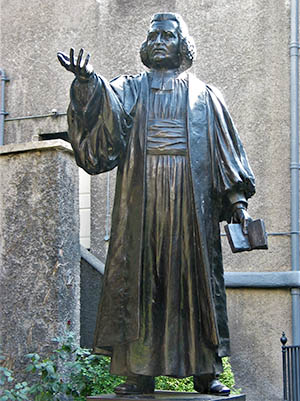 |
Saturday 7th April 2018 Robyn Coates
Robyn Coates spoke about Alfred Rowell who was
the Bandmaster of the 39th Battalion and later
the City of Ballarat Brass Band.
Alfred???s father, William, arrived in Australia
from Cornwall around 1882 and he married
Florence Gosden in Ballarat on 11th April
1883. Seven children were born to William
and Florence. Alfred, their fifth child was born
in 1891.
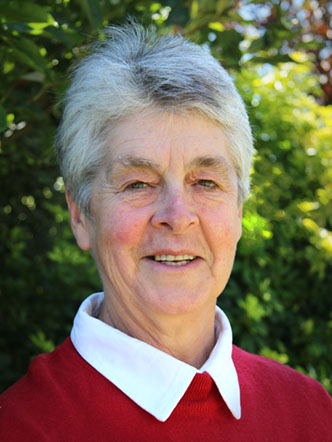 Robyn
|
When Alfred's father died in 1897 his mother was unable to support the children and most spent at least part of their childhood living at the Ballarat Orphanage. It was there that Alf was taught the to play brass instruments and became the best all round band boy. Robyn then went on to chronicle all Alf's achievements. He was appointed the Band Master Sergeant of the 39th Battalion. He served in WW1 and when not playing, bandsmen were stretcher bearers.a short time after arrival back in Ballarat, Alfred Rowell was appointed Band Master of the Ballarat Soldiers??? Memorial Band. The Band had success in Band competitions during the next few years. In 1924, Alfred Rowell became the Bandmaster of the Ballarat Municipal Brass Band. He continues to teach in schools, at the Orphanage and privately until late in life. |
Wendy Benoit and Joy Menhennet again spoke of
two of the families in their data base:
Joseph Deeble was born in 1834 in Helston to
William Deeble and his wife Frances (Fanny)
Truscott.
William was a veterinary surgeon.
Peter Blight was born in Ludgvan circa 1827 to
George and his wife Jenefer/Jane James.
His father, George, was a mine carpenter and in
the census of 1851, Peter is also listed as a
mine carpenter.
Peter Blight married Mary Daniel White in Madron
in 1853.
March 3rd 2018 - St Piran???s Day Celebration
A shared Lunch was served and the
speaker was Neil Thomas, from Geelong.
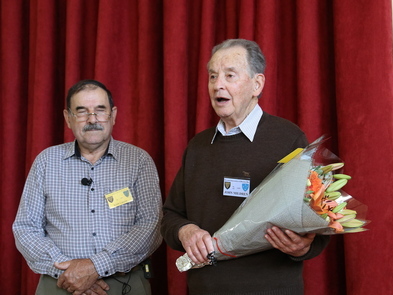 Keith and John |
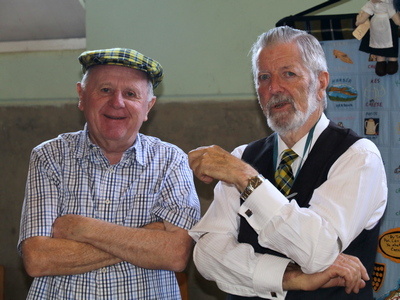 Arthur and Jim |
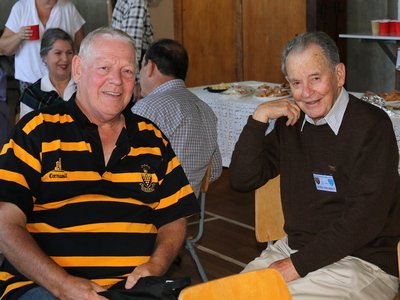 Rob and John |
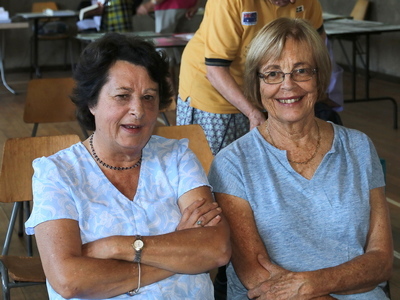 Marilyn and Ruth |
Neil???s talk centred on the Nebra Sky Disc and
he began by showing us the symbol found on
Subaru cars and suggesting that it represented
the constellation Pleiades.
The Nebra Sky Disc, two bronze swords, two
hatchets, a chisel, and fragments of spiral
bracelets were discovered, in 1999, in Germany,
near Leipzig, by Henry Westphal and Mario Renner
while they were treasure-hunting with a
metal detector.
The Nebra sky disc is a bronze disk of around 30
centimetres (12 in) diameter and a weight of 2.2
kilograms (4.9 lb), with a blue-green patina and
inlaid with gold symbols.
These are interpreted generally as a sun or full
moon, a lunar crescent, and stars (including a
cluster interpreted as the Pleiades).
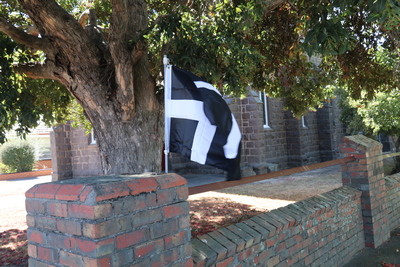 St Piran's Flag at Skipton Street |
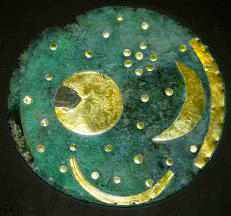 The Nebra Sky Disc |
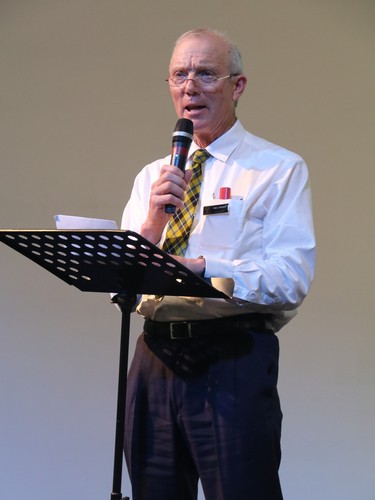 Neil Thomas |
February Meeting 2018 - Cornish Pioneers - by
Joy Menhennet and Wendy Benoit
| Wendy and Joy presented
information on a number of Ballarat people
of Cornish decent as follows: 1. Matthew Veal a Coach Builder of Smythesdale. 2 storeyed house still remains. 2. John Vial Snr. lived Sebastopol. 3. John Vial Jnr., his wife disappeared so the Sebastopol Fireman organised an unsuccessful search party. She was later seen at a wharf in Geelong. 4. Thomas Veal born St Just, Cornwall, lived Lydiard St., had 4 children. Operated a Creswick to Ballarat Coach, died as a result of a fall from the coach after a trip from Allendale. 5. Mary Coward nee Hocking married Methodist Church and lived in Ballarat East. 6. Thomas Skewes had 11 children , 7. William Trevaskis left Ballarat for Broken Hill but died enroute his body was returned to Ballarat and buried in Old Ballarat Cemetery. 8. Peter Harvey married a Wallace, lived Armstrong Street and attended Neil St Methodist Church. |
Joy and Wendy
|
10. John Clemens Hicks, was a miner and speculator having connections with the Band of Hope Quartz Co. Lived
Lyons St
11. Mary Pizaro nee Beer had 13 children.
12. Mary Dunstan first married William Whykes in Truro then married William Ellis and 3rd husband William
Dunstan and they lived in Buninyong.
Wendy & Joy were thanked for their presentation and afternoon tea was enjoyed.
December 2017 - Christmas Luncheon
Saturday, the first of December, found Cornish members from Bendigo, Geelong and Melbourne arriving at the Royal Mail Hotel in Sebastopol to join the Ballarat members for their annual Christmas lunch.There was lots of chatter as the people arrived, catching up with friends.
Everyone enjoyed the Christmas meal of a roast with a trio of meats and sweets. Before the sweets of Christmas pudding or pavlova were served Keith had a quiz about Cornwall and Wendy tested our knowledge of the Cornish language.
 |
 |
 |
 |
 |
 |
October 2017 Meeting - Shared Items of
Interest and Memorabilia
Joy Menhennet brought her photo album of photos
taken when Joy and Lilian Dell went to Cornwall to
become Bards. Wendy Benoit had her Great
Grandmother???s birthday book bought in October
1884. which cost two shillings.Val d???Angri spoke about the Curnow family. Her ancestors came from Prussia Cove, where the film, Ladies in Lavender was filmed.
Les George passed around a handmade brick. Les???s GGGrandfather, Richard Hall, worked on the construction of roads in Melbourne.
Lenice Stuchbery spoke about her search for "Trevega Farrm' . in the parish of Towednack , west Penwith, the home of her 5 x great grandparents Paul and Jane Quick.
Nita Bartle worked in the family Mixed business shop for twenty years on the corner of Cobden and Barkly St.
Lorice Jenkin read a newspaper article about a fire in a Grocer???s shop on the corner of South and Ripon Street which had been owned by her Great Grandfather???s brother.
Each presenter spoke about the history and importance of their contribution.
August 2017 - Mark Harris
Mark Harris has been an emergency department
doctor at both St John of God Hospital and
Ballarat Health Services Base Hospital. He
was educated at Mt Pleasant State School and
Ballarat and Clarendon College before doing
medicine at the University of Melbourne.He is married to a fellow doctor, Linda, and has three adult children, Claire, Paul, and Tom.
Apart from a stint with the Royal Flying Doctor Service in Kalgoorlie, Mark Harris has mainly worked in Ballarat, predominantly in emergency medicine.
| One of his passions is his
role as the 8/7th Battalion???s medical
officer, which has resulted in stints in
East Timor and Bougainville with the
United Nations and the Australian
peacekeepers, as well as pre-Afghanistan
training in Germany. Mark Harris was returned to represent the Central Ward in October 2016, having previously served Ballarat City Council as a Councillor from 2008 to 2012. He was Mayor of the City of Ballarat in 2012 and is currently deputy Mayor. In his talk, Mark explained how the Harris family had been in the Mt Pleasant area for many years after Charles Harris came from Cornwall to improve the family fortunes settling in Geelong, then Gordon and stayed in Mt Pleasant. |
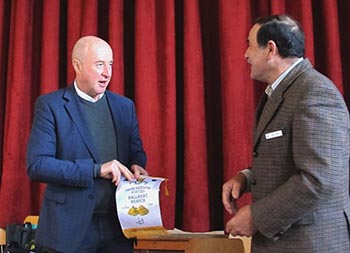 Mark with Keith Lanyon |
One of his passions is his role as the 8/7th Battalion???s medical officer, which has resulted in stints in East Timor and Bougainville with the United Nations and the Australian peacekeepers, as well as pre-Afghanistan training in Germany.
Mark Harris was returned to represent the Central Ward in October 2016, having previously served Ballarat City Council as a Councillor from 2008 to 2012. He was Mayor of the City of Ballarat in 2012 and is currently deputy Mayor.
In his talk, Mark explained how the Harris family had been in the Mt Pleasant area for many years after Charles Harris came from Cornwall to improve the family fortunes settling in Geelong, then Gordon and stayed in Mt Pleasant.
Mark then spoke about how a study of genetics is taking place in medicine and of the importance of the study.
He continued to tell us about how the Cornish have remained the same, even though the United Kingdom was invaded by the Romans, Saxons and Normans.
Very few cultures post Ice Age time have been as unaffected as the Cornish.
To prove his point Mark shared the result of his DNA test which was 99% Cornish, which is unusual for DNA results for people in the UK.
June 2017 Meeting - AGM plus Derek
Trewarne - "From Copper to Coal"
| Derek???s great
grandfather, Samuel Vine, aged 24,
emigrated from Cornwall to Australia.
Samuel found work in the Lord Nelson gold
mine in St Arnaud. In the early
1900???s the Lord Nelson mine was about to
close and the miners were encouraged to
move to the newly opened Powlett River
coal fields in Gippsland later to become
the Wonthaggi State coal mine to which
Samuel went. After a miners??? strike at Wonthaggi, the Victorian Government quickly approved the formation of the Powlett River black coal mine. By the 1930???s, Wonthaggi simply could not compete economically with the richer fields of NSW. Samuel Vine died in 1926 aged 69 and is buried in the Wonthaggi cemetery. |
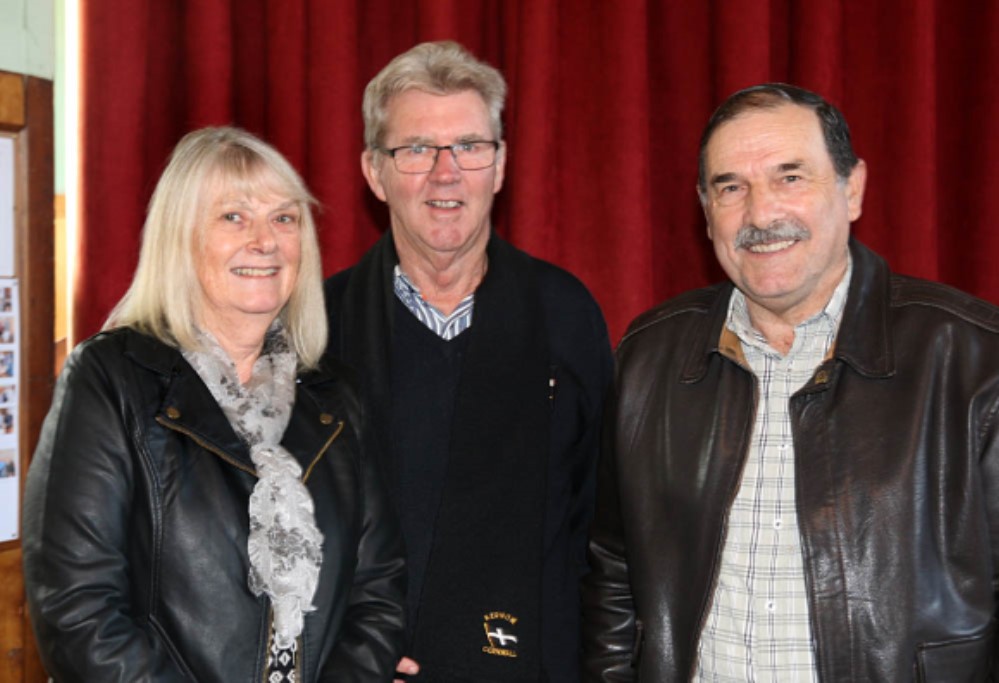 Jenny and Derek
Trewarne with Keith Lanyon
|
Operations, in Wonthaggi, ceased altogether in
1968 after extracting 17 million tonnes of
coal.
Office Bearers for 2017-2018
Chairperson: Keith Lanyon; Vice Chairperson:
Wendy Benoit; Administrative Secretary: Lorice
Jenkin; Treasurer: Ian Jennings
Committee members: Robyn Coates; Bev Hocking;
Jim Hocking; Joy Menhennet; John Mildren &
Lenice Stuchbery
April 2017 Meeting - Keith Lanyon - "What's in a Name"
Keith Lanyon gave a very interesting talk,
What???s in a name?
Many surnames are patronymic ??? derived from
the father???s name. Such names were formed by
adding a prefix or suffix denoting either son of
or a diminutive. English names
terminating in son, s, ing, and kin are of this
type, and also the many names prefixed with the
Gaelic Mac, the Norman Fitz, the Irish O, or the
Welsh ab or ap (being contractions of the Welsh
words mab and map meaning son)
Hence the sons of John became Johnsons; the sons
of William became Williamsons or Wilsons the
sons of Neill, Mac Neill; the sons of Herbert,
Fitz Herbert; the sons of Reilly, O???Reilly;
and the sons of Thomas, ap Thomases (though ap
has been dropped from many names of which it
formerly was a part.)
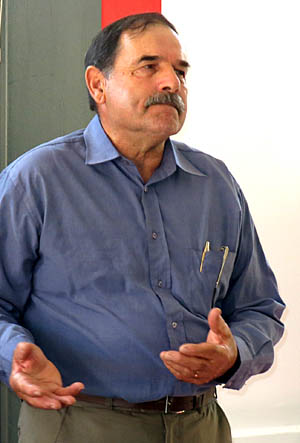 |
Another class of surnames are those arising from some personal characteristic of their owner. Peter the strong became Peter Strong, Roger of small stature became Roger Little or Roger Small, and black-haired William or blond Alfred became William Black or Alfred White. Cornish examples: Coad ??? Old Wynn - white Angwyn ??? an gwyn - the white or fair (man) A third class of names is that comprising local surnames - names derived from and originally designating the place of residence of the bearer. Such names were used in France at an early date and were introduced into England by the Normans, many of whom were known by the titles of their estates. The surnames adopted by the nobility were chiefly of this type, being used with the particles de, de la, or del (meaning of or of the). |
Cornish examples
Trewarne ??? tre ??? (g)wen ??? homestead
by swamp
Trengove ??? tre ??? an ??? go(f)ve ??? the
smith???s homestead
Penhallarick - pen-hal-lurek ??? top of
cultivated ground on moor
A fourth class of surnames are those derived
from occupation. The earliest of
these seem to have been official names such as
Bishop, Mayor, Alderman, Sheriff, Chamberlain,
Chancellor, Chaplain and Deacon
Trade and craft names, although of the same
general type, were a slightly later
development. Currier was a dresser of
skins, Webster a weaver, Wainwright a wagon
builder, and Baxter a baker - Archer, Smith,
Taylor, Barber, Shepherd, Carter, Mason, and
Miller are self-explanatory.
Cornish Example
Angove - an gove ??? the blacksmith
St Piran's Day Celebration 4th March 2017
Thirty Members from across Victoria, one
visitor and one baby attended our celebrations
at Carn Brea in Mair Street on Saturday 4th
March.
After a cuppa and chat, Keith Lanyon welcomed
everyone and gave us a short history of St
Piran.
The singing of Trelawney was energetic and a
piano accompaniment by Joy Menhennet helped.
We had a flag raising ceremony where the Cornish
Flag was raised by Keith Lanyon and the former
President of the Ballarat Branch, John Mildren,
placed a sheath of flowers remembering those
Cornish Miners who had settled in Ballarat.
Hail to the Homeland preceded a rousing Kernow
bys Vyken.
Much conversation followed over a shared lunch,
after which some people looked over Carn Brea,
the former residence of Cyrus Bath Retallack;
others perused the various displays or continued
chatting.
All in all and great day for One and All.
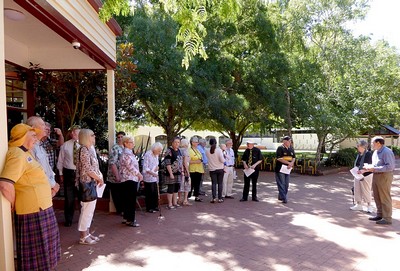 |
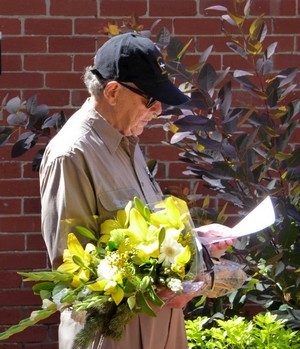 |
 |
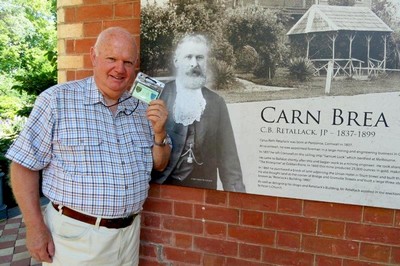 |
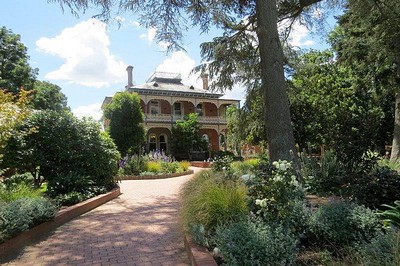 |
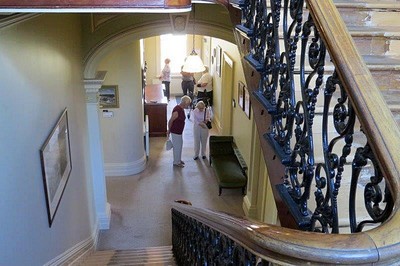 |
February 2017 Meeting - Down Memory Lane
 Dorothy Tucker |
Dorothy Tucker from Saltash
in Cornwall was our speaker in February. Dorothy was born at Glebe Cottages, Vogus Lane, St Dominick in 1938. Prior to coming to Australia to visit her son, Dr Simon Tucker, a virologist, Dorothy and a friend walked through the area where she had lived as a child and young woman, beginning at St Dominick. There were only eight or so houses and a farm in St Dominick and Dorothy lived next door to her aunt and uncle. Electricity wasn???t available until 1958 so their home was lit with candles and lamps. There wasn???t a supply of tap water and the family shared a water pump with their neighbours. Her father was a farm worker at Baber, a small hamlet and Dorothy shared stories of her father???s life as a farm worker and also of raising hens and growing vegetables. The meat was rationed because of the war so they had their own pig which was housed in a big shed at the top of the garden. All parts of the pig were used to supplement their food. |
Walking through Piper???s Wood, they passed a
small waterfall and came to the house of artist
Mary Martin and then to Cotehele House, former
home of the Edgecumbe family, and now managed by
the National Trust.
Turning into Vogus Lane was Brent???s Woods
planted by Dorothy???s father and uncle about 70
years ago, and where her family members and
friends used to play as children.
As a child, Dorothy picked primroses and her
mother packed them in cardboard boxes and they
were collected and sent to a flower market in
one of the major cities for sale. Payment was 2d
(two pennies) a bunch and the proceeds went
towards buying new outfits and shoes for the
Sunday School Anniversary in the Methodist
Church.
The anniversary was a highlight of the year. A
platform was erected at the front of the church
for approximately thirty children to sit.
Special hymns were sung by the children after
many weeks of practice.
During the Second World War the American soldiers used Vogus Lane as a very important part of their training. Phone lines went up and down the Lane attached to the very tall beech trees. The Army Lorries drove up and down the Lane and landing Ducks were around the River Tamar.
|
Around Saltash there
were a lot of military Camps and if you
wander you can still find evidence.
St Dominick is still a lovely place in which to live but times change, television takes the place of homemade entertainment, and very few attend church or chapel. For many it is a dormitory village. People go to Plymouth and the surrounding areas to work and for shopping, theatres and cinemas. Wendy thanked Dorothy for her interesting talk and gave her a copy of Our Heritage, Our Treasure. Members enjoyed High Tea and a chat after the meeting. |
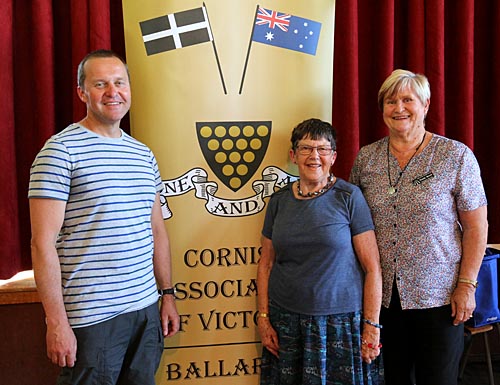 Simon, Dorothy and Wendy |
December 2016 Meeting
Although our numbers were down on previous
Christmas functions, those who attended had a
wonderful time, including some members from
Melbourne, Bendigo and Geelong who joined us for
the afternoon.
The group enjoyed singing Christmas carols and
we were grateful to Beryl Curnow for playing the
piano.
Wendy presented a Cornish story, Thomasine
Bonaventure, which Maureen Fuller had told her
while sitting in the square, at Week St Mary as
was featured in photos in a Power Point
presentation.
Week St Mary is a village in northeast Cornwall.
It is situated south of Bude close to the River
Tamar and the border between Cornwall and Devon.
After the meeting, a scrumptious meal was
enjoyed. Thanks to Rev. Ted Curnow for saying
grace.
A big thank you to all who helped with the
preparation of the meal and to the Girl Guides,
under the guidance of Marg Littlehales, who
helped with the setting up and clearing away.
Winners of the Special Effort:
Jeff Menhennet voucher ??? Craig???s Voucher
Ian Jennings - two DVDs
Les George - Shortbread biscuits
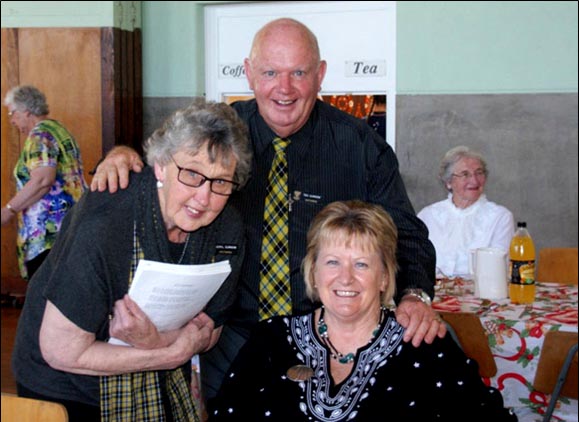 |
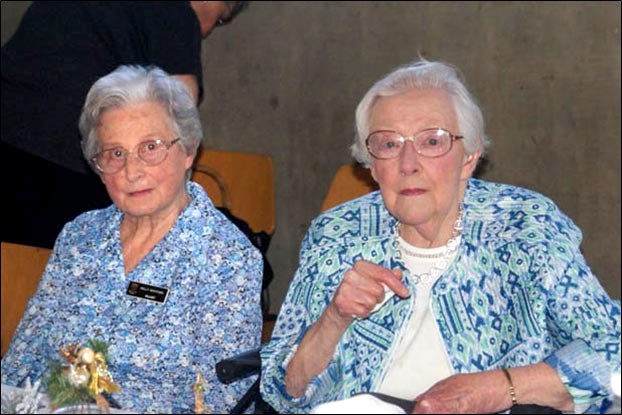 |
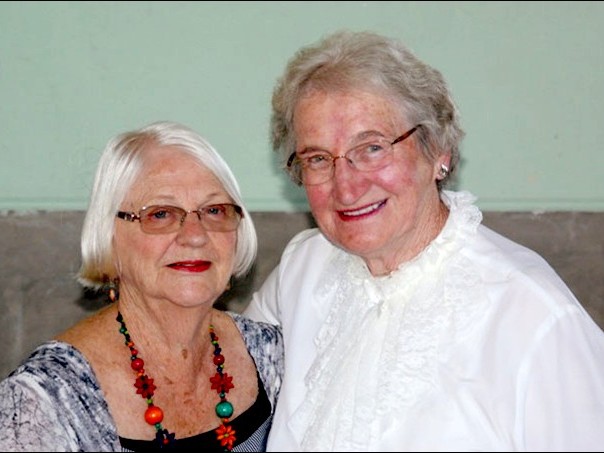 |
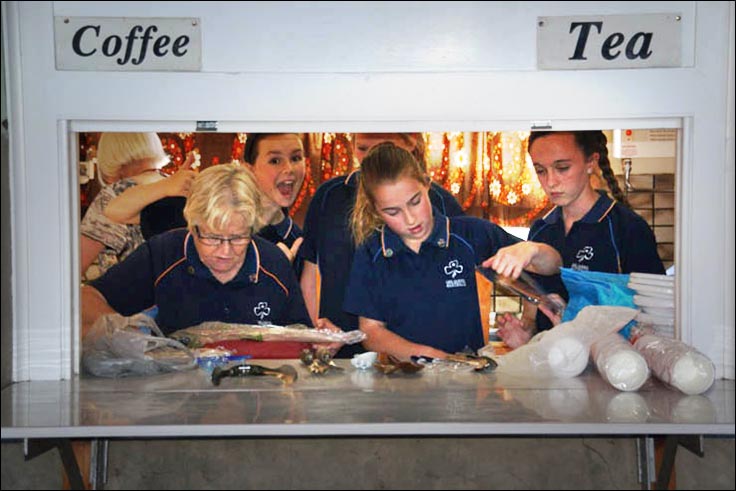 |
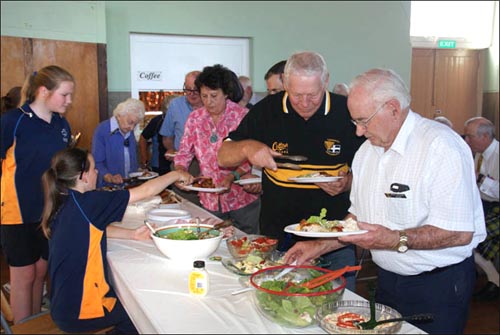 |
Buninyong Trip
Eighteen members from Ballarat, Geelong and
Melbourne enjoyed a relaxing day touring around
the Buninyong area in a small bus driven by Jim
Hocking with informative guidance supplied by
both Bev and Jim Hocking.
Our first stop was Buninyong Town Hall and Court
House where Dr Anne Beggs-Sunter greeted us
along with the President of the Buninyong
Historical Society, Simon Dennis.
Anne showed us through the wonderfully restored
building and afterwards answered questions
whilst members had the opportunity to look at
the various displays in the Court House and
check out records on the data base.
Our next stop was the Old Public Library - part
of the Buninyong Historical Society???s complex
of buildings.
This followed a short tour around Buninyong,
with Anne as our guide.
Our President, Wendy, offered thanks on behalf
of members and made a small presentation to
Anne.
We were pleased to renew acquaintance with
Doug Bradby who was on duty at the Library.
The Library was built in 1861 as a gift to the
townspeople from Robert Allan, a prominent local
businessman.
Some took advantage of the beautiful sunny day
sitting outside the library before we all
boarded the bus again for a short trip to Black
Lead and the Napoleons Historical Society where
the members had prepared a wonderful spread of
sandwiches and cakes for our lunch. The former
Black Lead Uniting Church and Hall is a pair of
Methodist buildings dating from 1862 and 1913.
Les George opened the building so people could
wander through with some finding members of
their family in the displays.
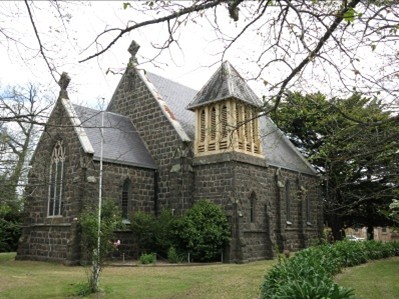 |
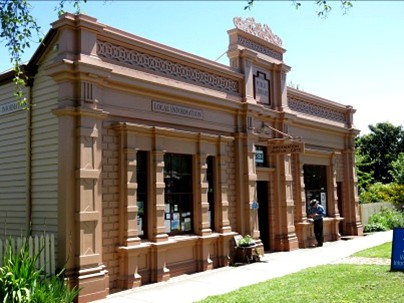 |
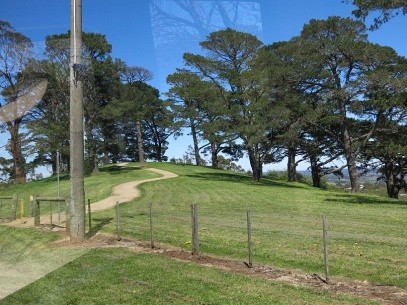 |
a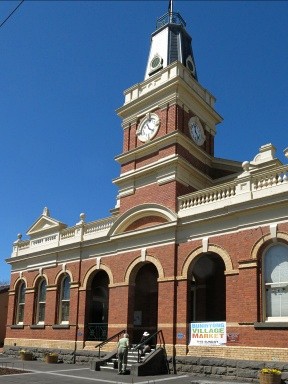 |
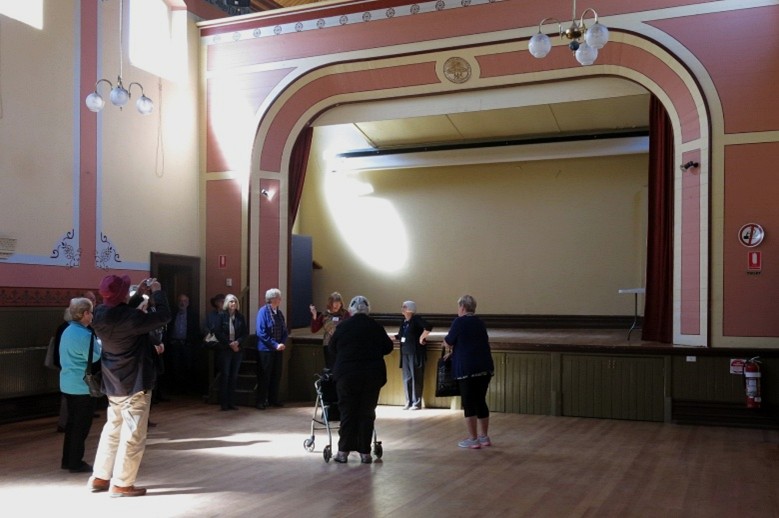 |
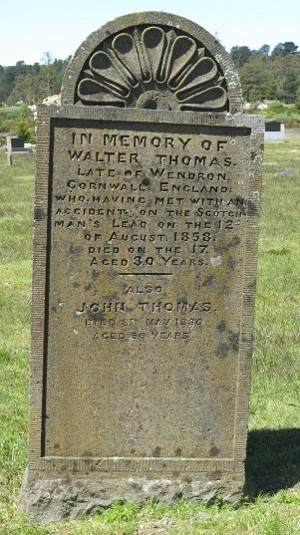 |
October 2016 Meeting
Our speaker at the October meeting was John
Hosking.
John presented a session entitles, What???s so
Funny?
This included a number of poems he had written
over the years and also some from well known
authors and comedians.
Titles included:
*An Anthem
*The Eucalypts
*Chambers Handel music
*Railway Hotel Linton
*Christmas holidays
*Stories about their Home in which they were
living at Buninyong including the adventures of
his chickens and geese
*A poem by G K. Chesterton about Noah.
*Driving down a dirt track in the centre of
Australia
*Old age ??? now you are only a number
*Dentures with a Pam Ayres poem about teeth,
John then shared one he had written about
parrots for his grandchildren. John???s humour
was evident as the listeners reacted as he read
his poems.
August 2016 Meeting
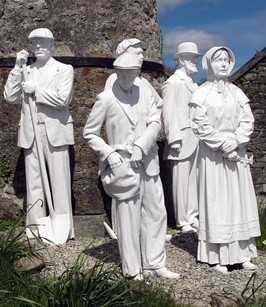 |
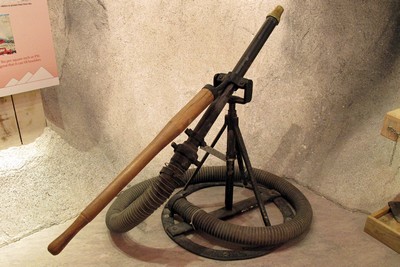 Left: China Clay Statues at Wheal Martyn Above: High Pressure Hose |
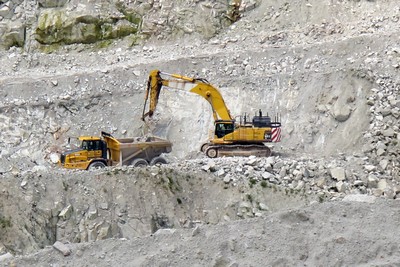 Above: Clay Pit at Wheal Martyn |
John Hosking spoke on the Cornish Clay Industry
at the last meeting, with first hand knowledge
of the industry.
China clay is a material known as kaolin which
was first used in China many thousands of years
ago to make fine white porcelain.
Some of this made its way to Europe where the
gentry were still making do with crude
earthenware pots and where porcelain was highly
sought after.
William Cookworthy, a Plymouth apothecary began
to research the porcelain making process and
spent several years searching for material that
resembled the kaolin that had been used for so
long in China. In 1745 he eventually found it at
Tregonning Hill , near Germoe, in Cornwall where
a rare type of decomposed granite, finer than
most talcum powders, occurs naturally.
This material was known locally as Moorstone,
Growan and Growan Clay.
Cookworthy found a way to separate the material,
using water to remove impurities and then spent
another twenty years developing his own recipe
for making porcelain, which he successfully
patented in 1768.
He immediately established the Plymouth
Porcelain Factory and began making fine china to
sell to the gentry.
He also began to sell the raw material to other
English potteries
By the early nineteenth century the industry was
big business.
The St Austell deposits had emerged as the
largest in the world and other uses had also
been found for the clay, such as in paper, paint
and rubber goods.
Throughout the 19th century thousands of men
were employed with harsh working conditions,
either spraying the walls of open pits with high
pressured hoses to remove the clay or processing
and transporting the material which was exported
to all corners of the globe.
By 1910 Cornwall was producing about fifty
per cent of the world???s china clay.
In 1919 the three main producers merged, calling
themselves English China Clay which continued to
dominate the market until it was bought by a
French company in 1999.
Today the St Austell deposits have been largely
abandoned with some of the operations being
moved to Brazil.
Now there are less than two thousand employees
left in Cornwall.
The legacy of China Clay still defines the
region, with the Eden Project sitting in a
former china clay pit and the Wheal Martyn
Heritage Museum set in the grounds of two former
working china clay pits.
June 2016 Meeting
| At AGM meeting, the
2016-2017 Ballarat Committee was
elected: Chairperson - Wendy Benoit Vice Chairperson - Keith Lanyon Administrative Secretary - Lorice Jenkin Assistant Admin Secretary - Lenice Stuchbery Treasurer - Ian Jennings |
Committee Members
Robyn Coates Bev Hocking. John Hosking Jeff Menhennet Joy Menhennet John Mildren Lenice Stuchbery |
| Our speaker was Past
President of the CAV, Rev. Prof. Robert
Gribben whose chosen topic was ???The
Varieties of Methodism???. With many
members in the audience having a Methodist
background, this was a most interesting
topic. Different types of Methodism that evolved: 1791 Wesleyan Groups that broke away were: 1797 The Methodist New Connexion. William Booth, founder of the Salvation Army, was a member of the New Connexion. 1806 The Independent Methodist also known as Quaker Methodists |
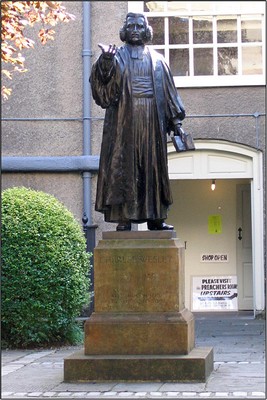 |
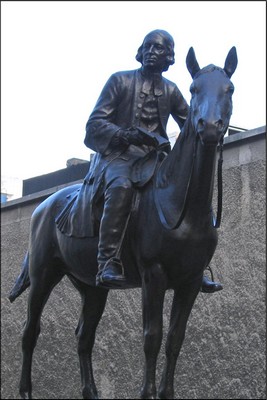 |
| 1811 Primitive Methodists
??? founders were Hugh Bourne and William
Clowes 1814 - Tent Methodists 1815 The Bible Christians 1831 Arminian Methodists 1835 Wesleyan Methodists Association 1847 Protestant Methodists ??? no pipe organs 1849 Wesley Reform Society 1857 United Methodist Free Church The Wesley brothers published many books which included diaries, sermons letters and medical advice. There were also many potteries made busts of John Wesley. |
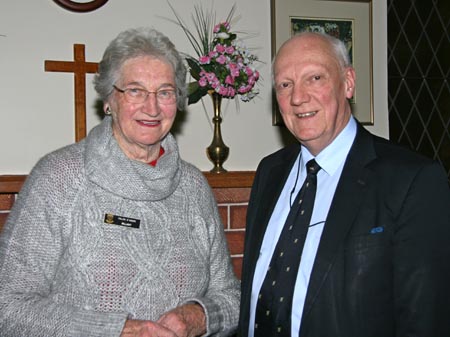 Val D'Angri and Robrt
Gribben
|
In Australia in 1902 the various groups joined
to become The Methodist Church and in the UK the
various groups formed the Methodist Church in
1932.
April 2016 Meeting - Max Beck "A Different
Earth"
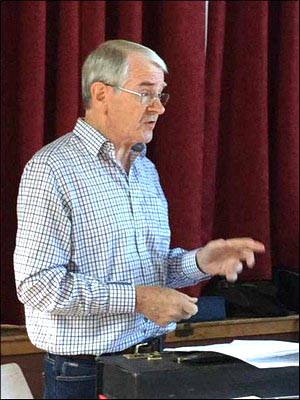 |
During the April Meeting,
Max Beck gave a very interesting talk
about his book A Different Earth To research the material to include in his book Max read the diaries of many people who had similar experiences to Jane Dunstan his great-great Grandmother. The great Cornish migration to Australia had begun before the gold rush because times were tough in Cornwall. His book is also about the history of the Cornish emigrant miners who came to Australia to seek a better life. On the threshold of starvation when the potato blight hit Cornwall Jane Dunstan decided to rescue her family from desperate poverty and her husband, Richard, from the dreadful conditions in the mines. She successfully applied for a free passage to migrate to South Australia with their seven children aged one to twelve. |
After suffering appalling living conditions in
the cramped steerage quarters of the ship and
the challenges of the sea during the three month
journey, the family, on arrival in South
Australia in 1849 travelled 100 miles north of
Adelaide by bullock wagon and walking to the
Burra copper mines.
At Burra they lived in an underground dugout in
the banks of the Burra Creek. Richard and his
three eldest sons worked in the copper mines.
For Jane it was a dramatic time, with floods, a
new baby born underground and the tragic loss of
her husband and two daughters.
On the discovery of gold in Victoria in 1851,
Jane hired a bullock dray and driver to take her
and her remaining six children on a courageous
six week overland trek to the Victorian
goldfields. Max described the difficulties of
locating and travelling along the trail as they
travelled from South Australia to Victoria
On arriving at the diggings Jane was horrified
by what she saw but made do with what was
available. Ultimately Jane remarried and had
three more babies. In total she had eleven
children. She eventually became the Grandmother
to fifty-nine.
Jane died in 1886.
February 2016 Meeting
Keith Lanyon was our February speaker and members
were very keen to hear of Keith???s experiences as
an RAAF Chaplain. Keith wore his uniform
To begin, Keith briefly tested our knowledge of the RAAF and then told us that the RAAF was formed in 1921 [following on from the Australian Aviation Corps/Australian Flying Corps which was formed in 1912 and was part of the Australian Army and formally disbanded in 1919].
The initial leader was Sir Richard Williams who was born in Moonta and was the son of Richard and Emily Williams. His father, also Richard, was a copper miner who had emigrated from Cornwall.
The first RAAF Squadron to go to war was 10SQN who were in UK in 1939 to collect their new Sunderland Flying Boats. They stayed in UK for the duration of the Second World War flying with Coastal Command.
Chaplains are considered by Air Force Command to belong in the Welfare area of the Air Force responsible among others for the spiritual and personal wellbeing of members.
A typical day in the office on a Base in peacetime includes:-
*Personal and official administration
*Interviews with members about personal or spiritual matters
*Administering the RAAF Small Loans Scheme
*Visiting on base Units
*Giving briefings on matters such as Drug and alcohol Awareness, Suicide awareness and Traumatic Stress and Post Traumatic Stress Disorder.
*Contact with Command
Keith had been deployed to the Middle East and here there were additional duties including support for members of various Services especially with regard to injury and death.
Keith had a table of curiosities including a piece of Lapis Lazuli from Afghanistan the blue pigment used in pyramids of Egypt. We enjoyed seeing his various hats.
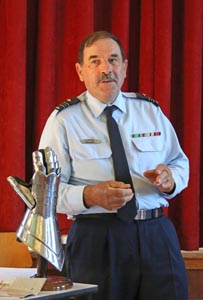 |
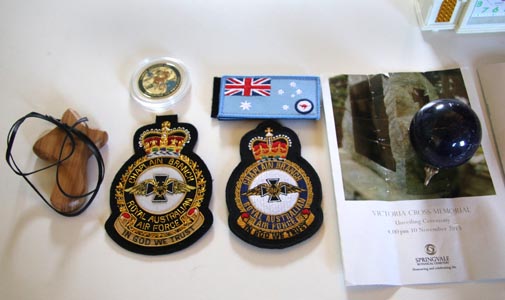 Badges, ball of lapis lazuli and Victoria Cross Memorial Order of Service. Left: Keith Lanyon with steel gauntlet |
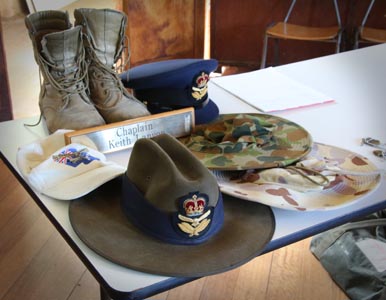 Boots, hats and ID
discs
|
A Question Time followed including how one becomes an RAAF Chaplain.
This is a dual process.
1) To meet RAAF recruitment standards (including physical) and undergo Officer training
2) To be endorsed by the appropriate denominational body within the Religious Advisory Council to the Services. In my case that means the endorsement of the Baptist Union of Victoria going through the grouping of Other Protestant Denominations member of RACS
Wendy presented Keith with a Ballarat CAV banner to thank him for his informative and interesting talk.












